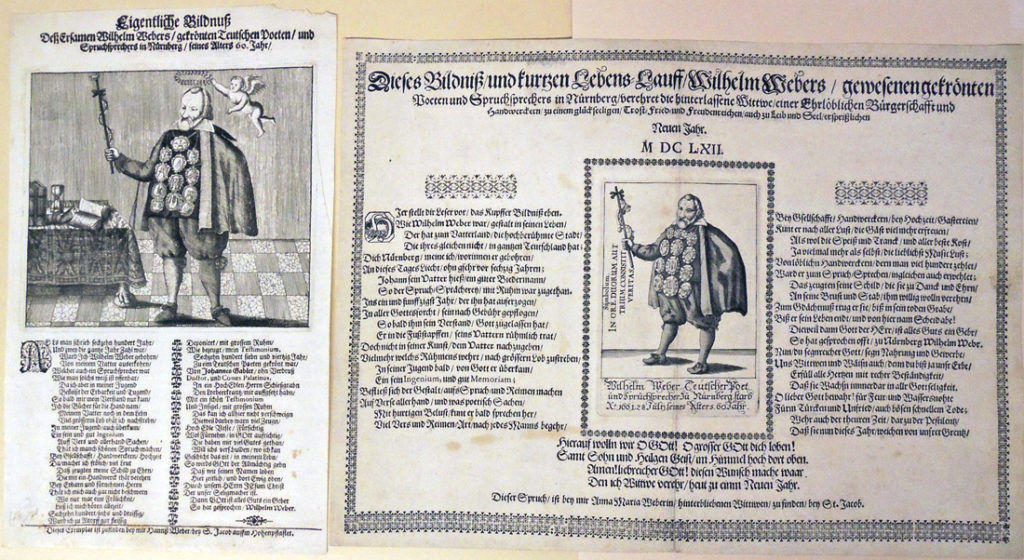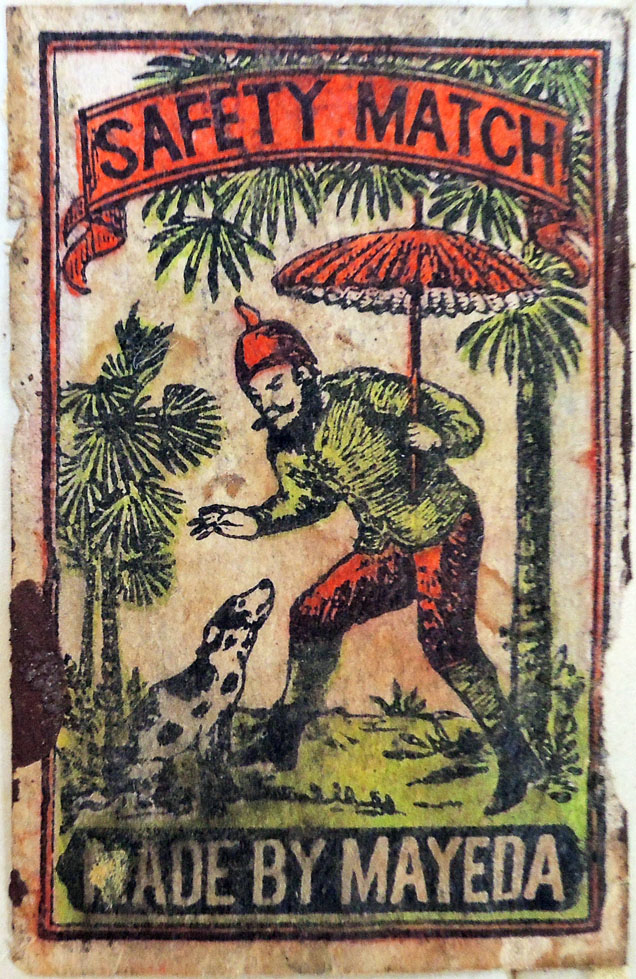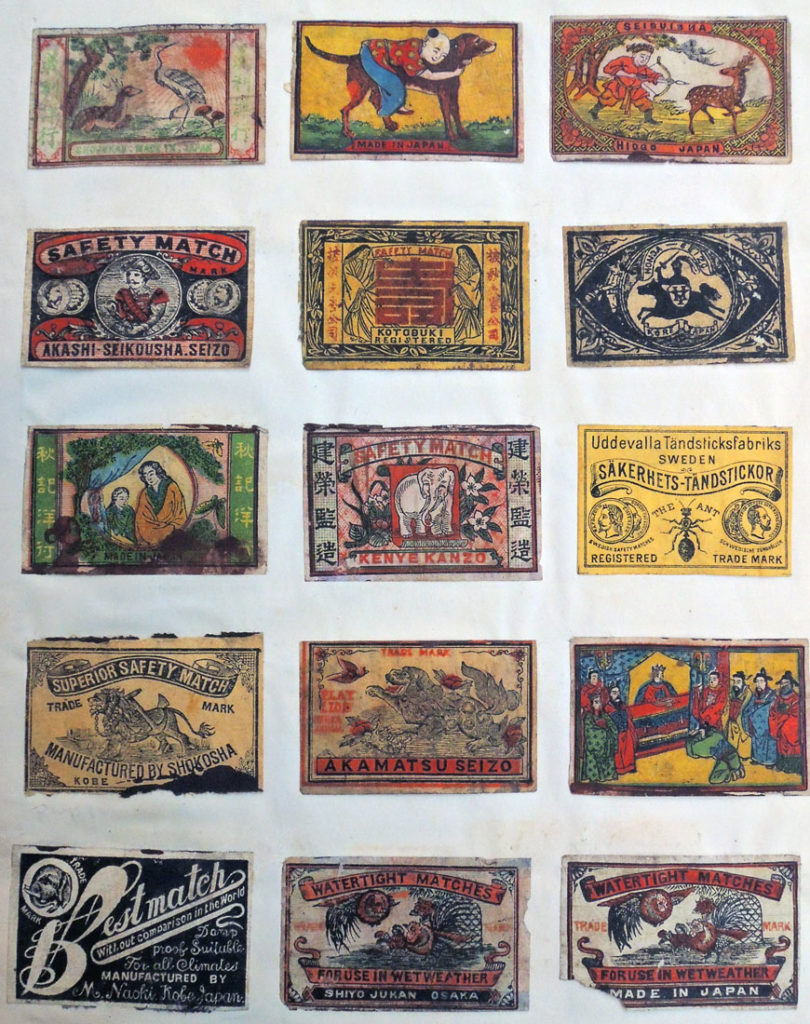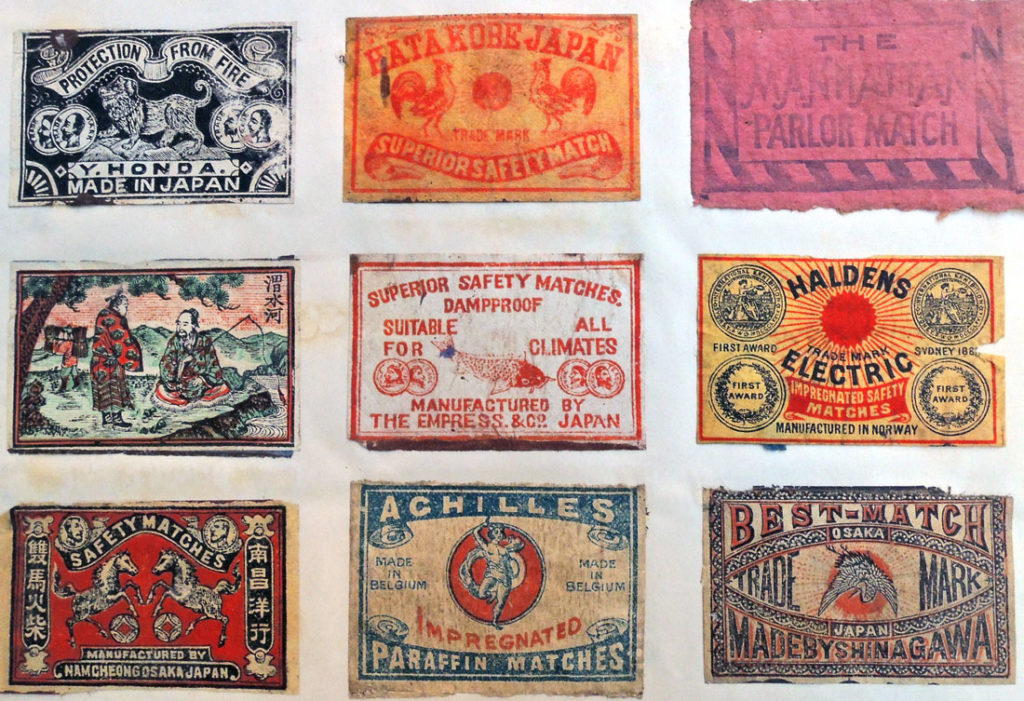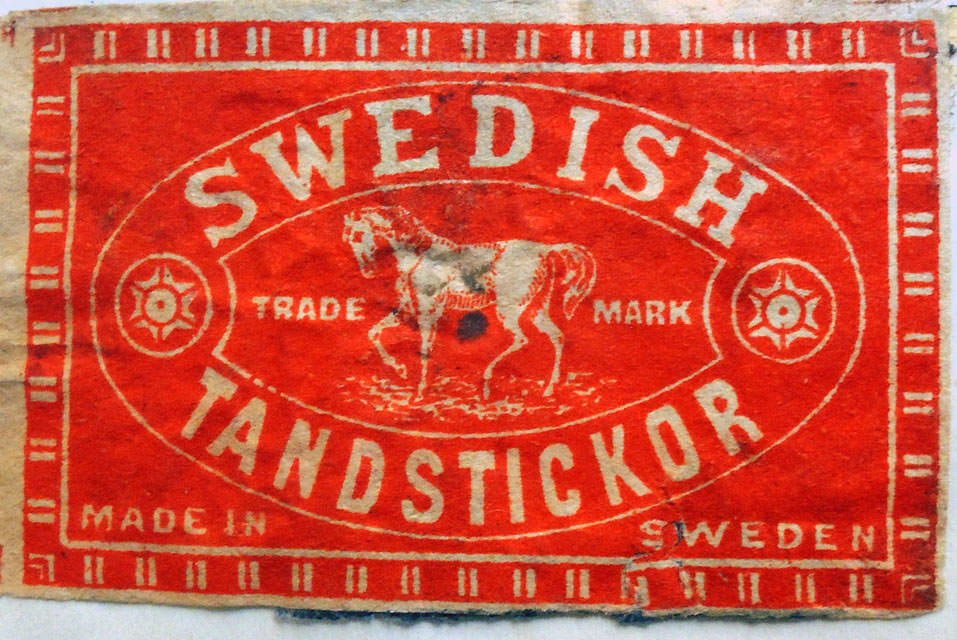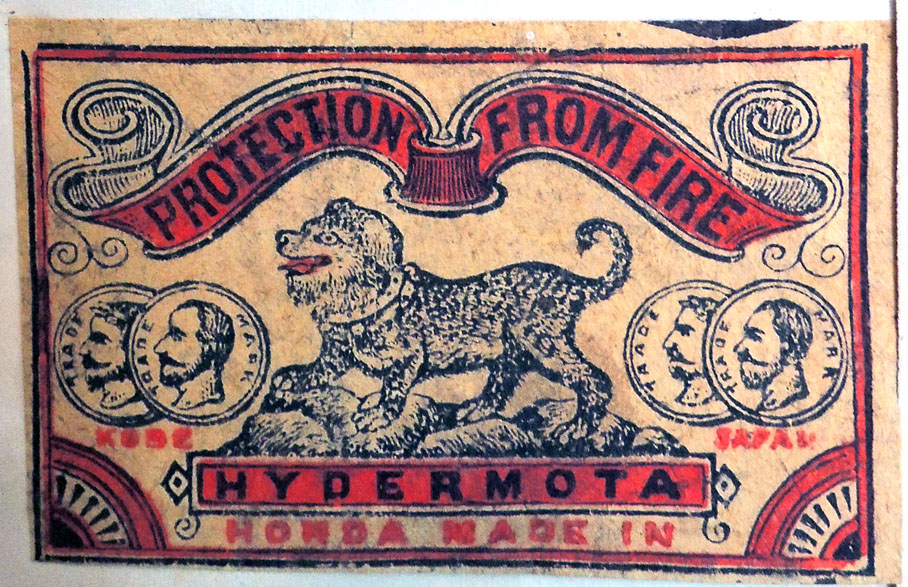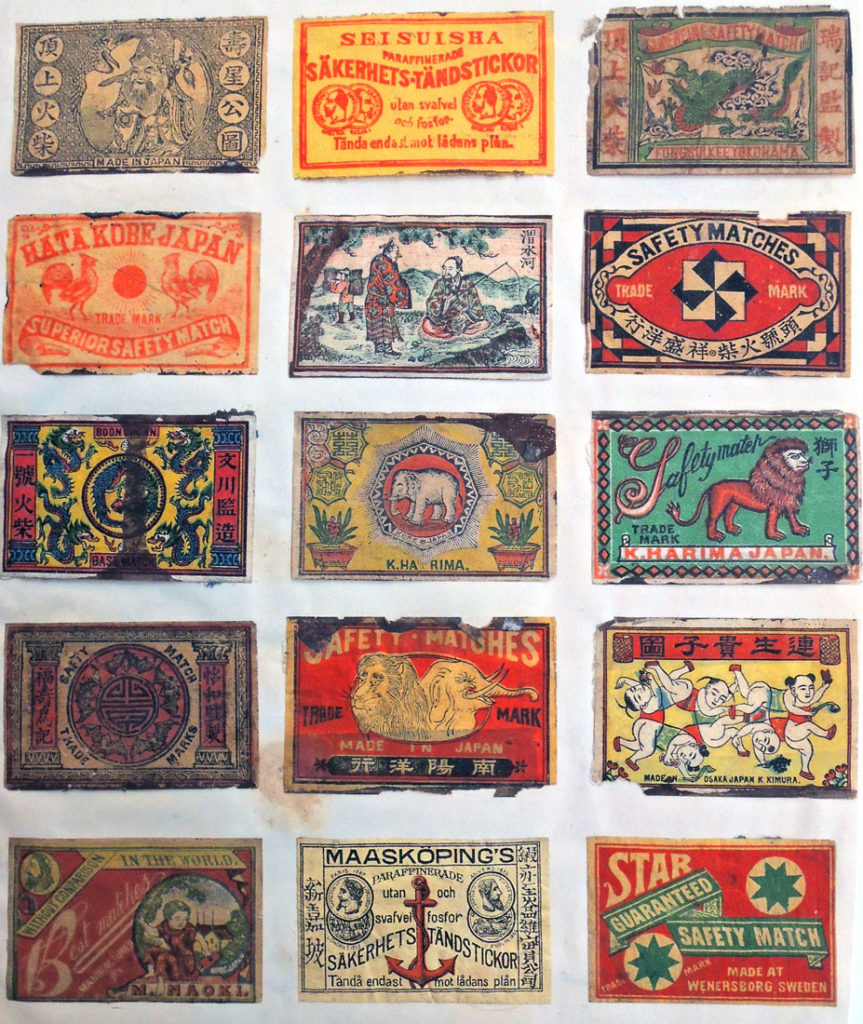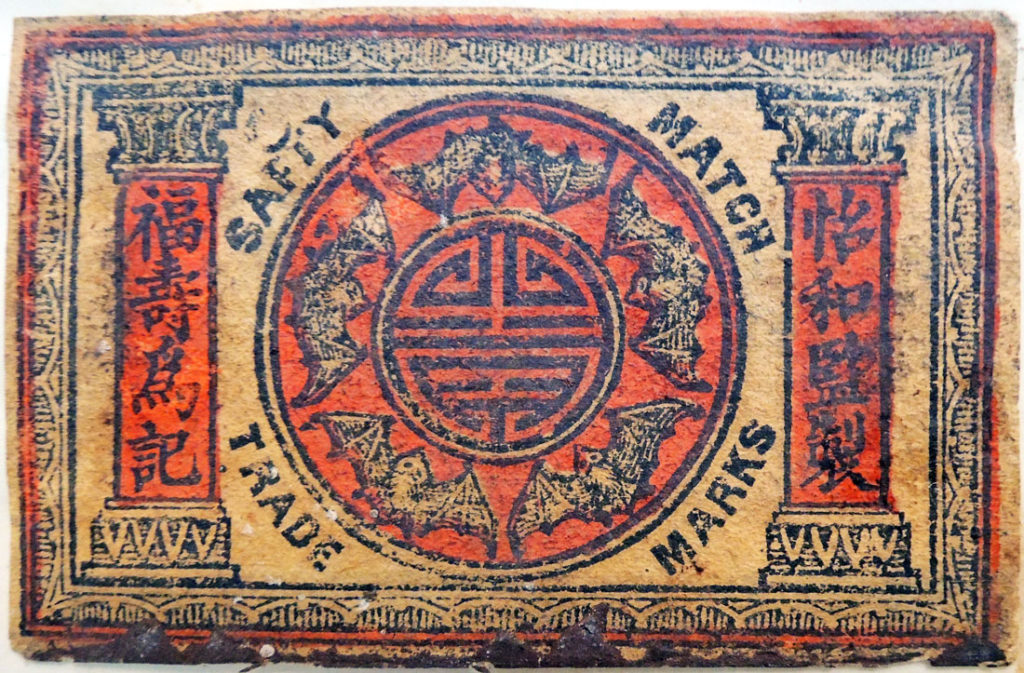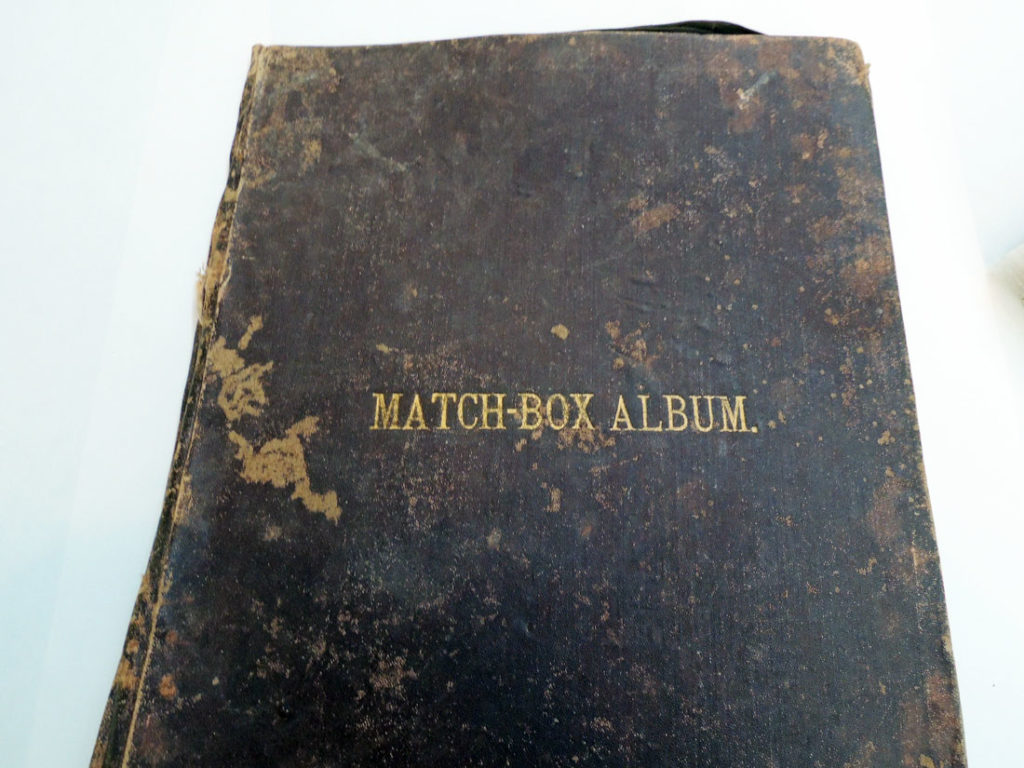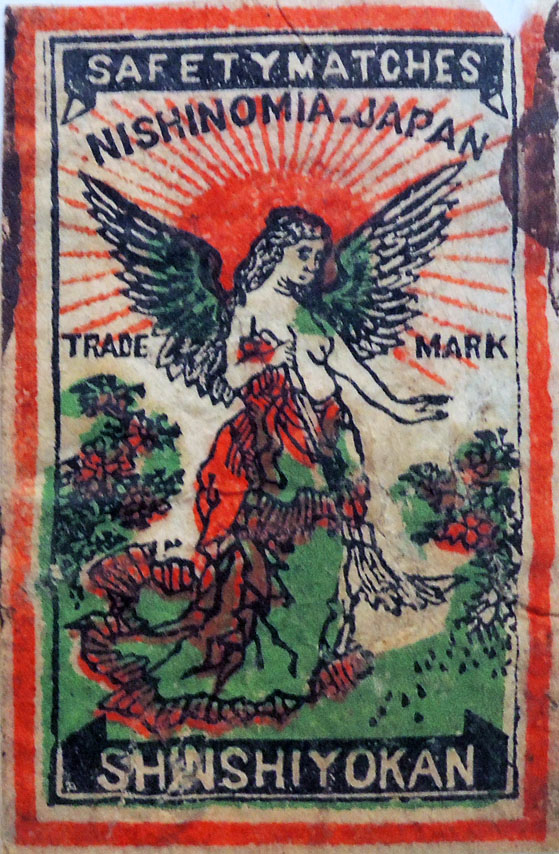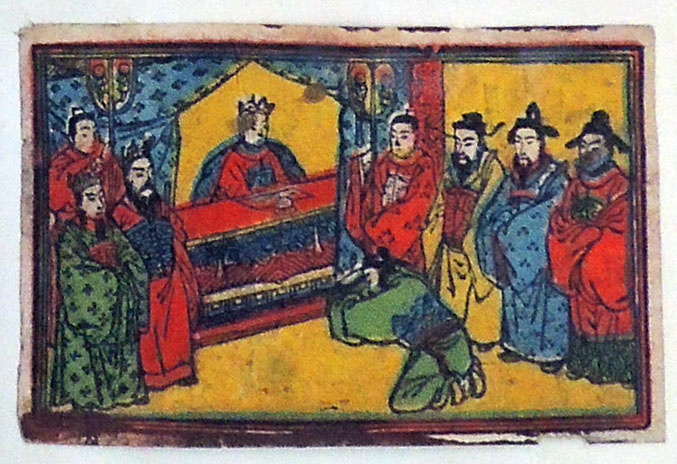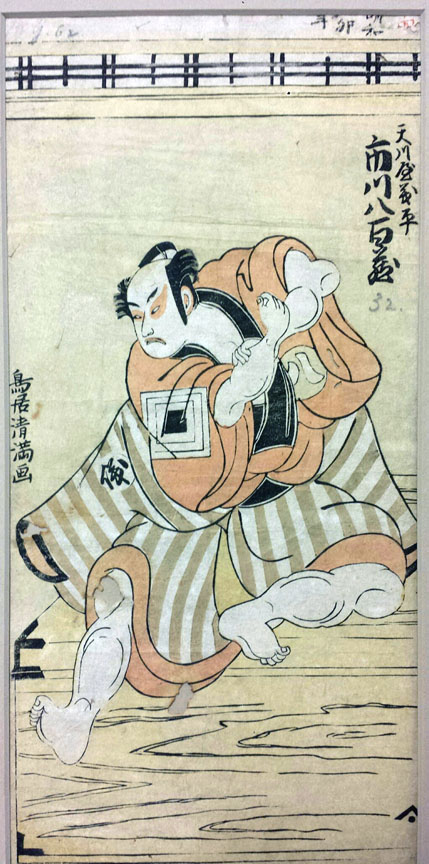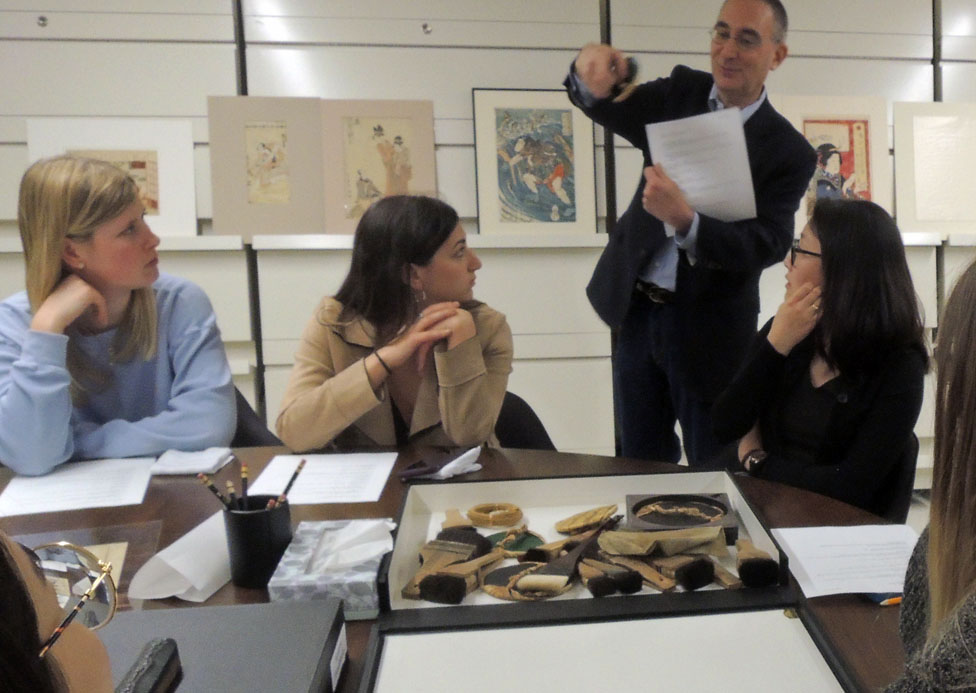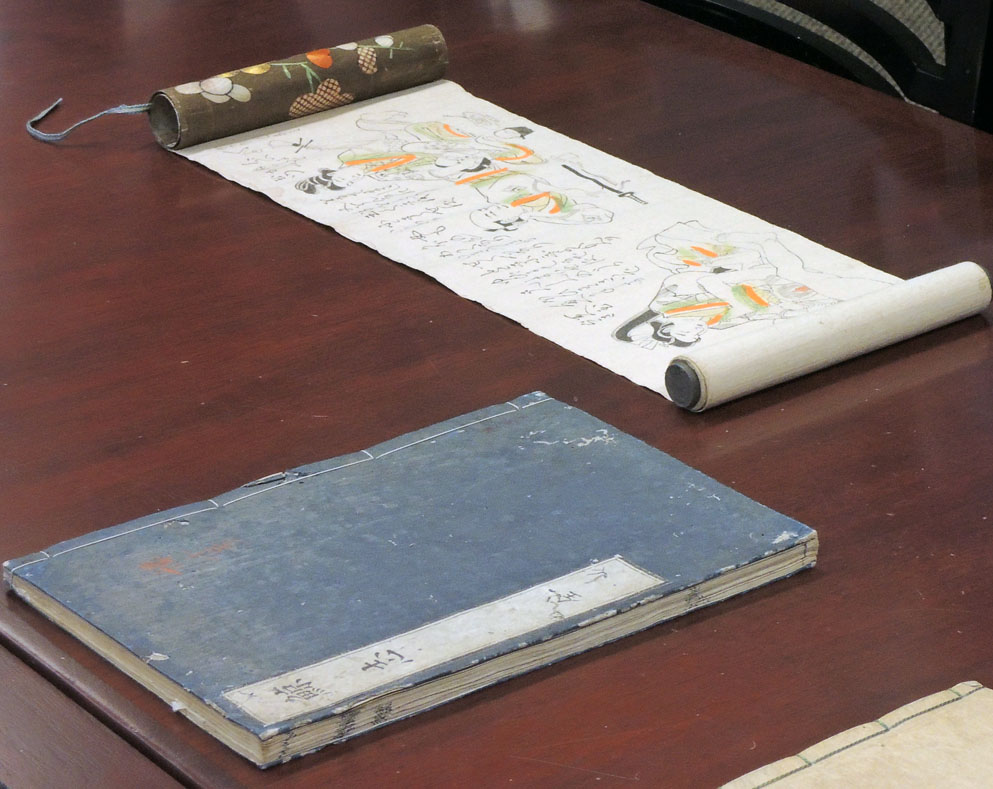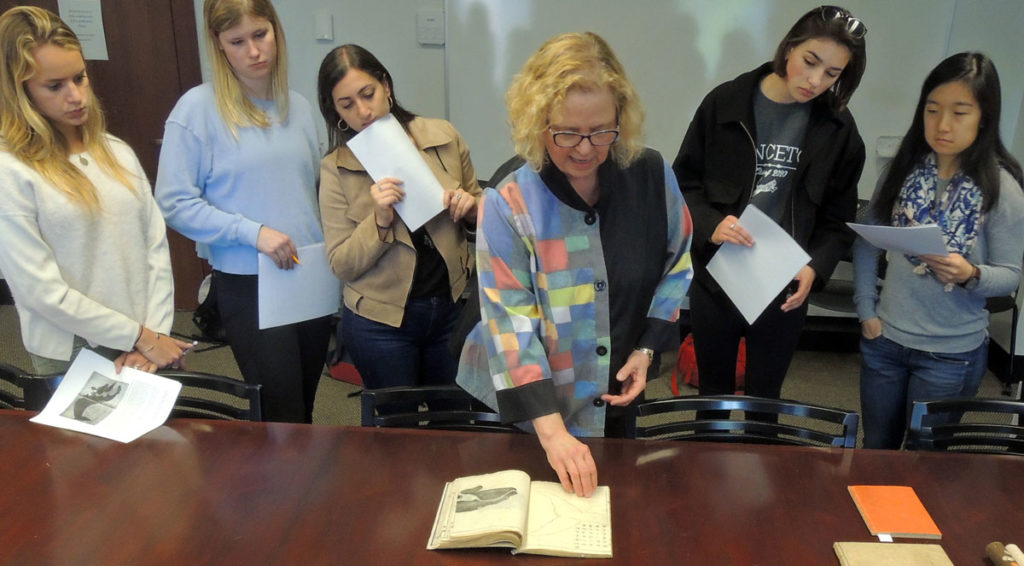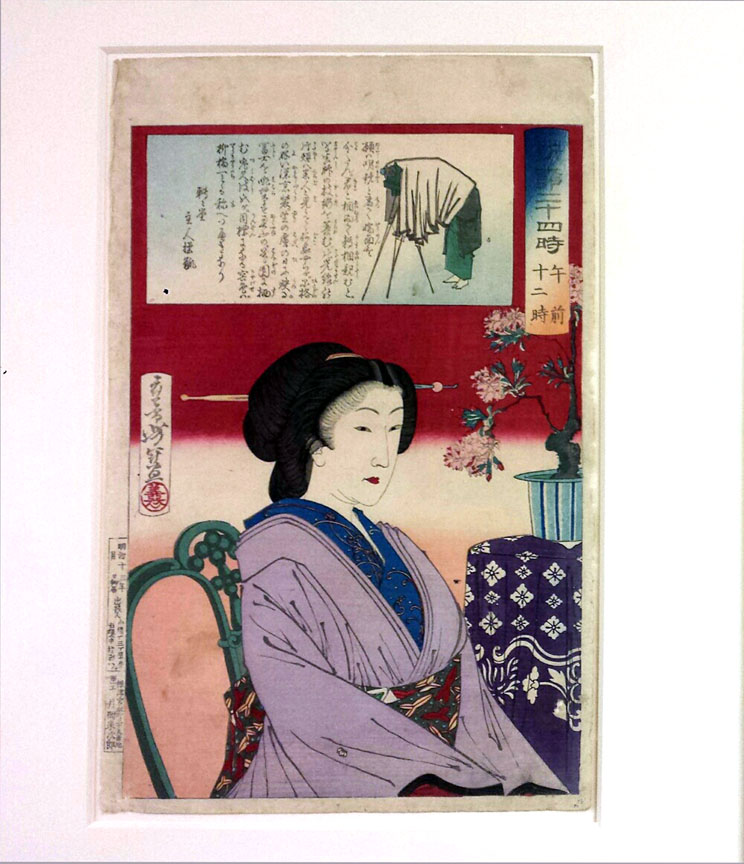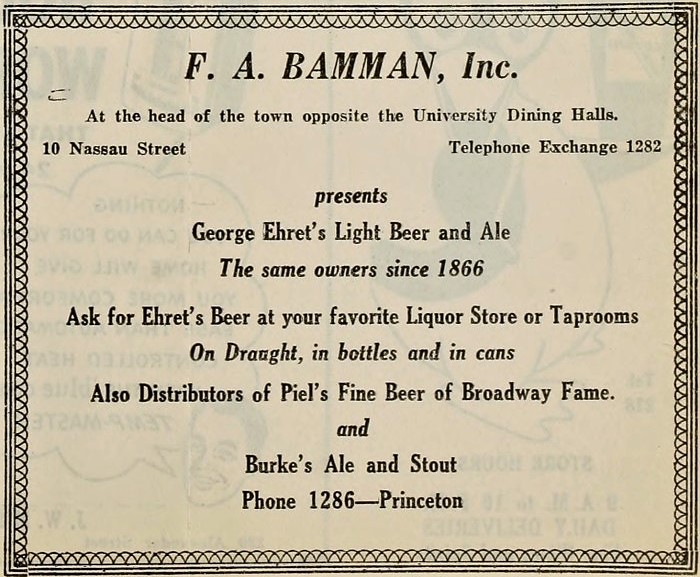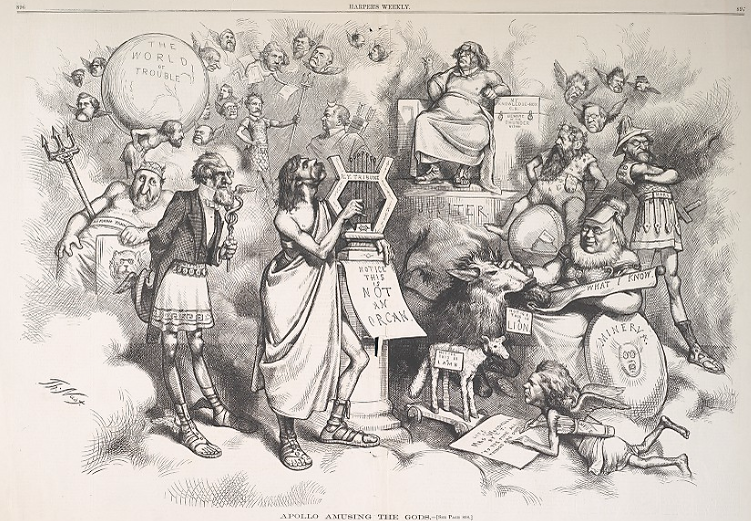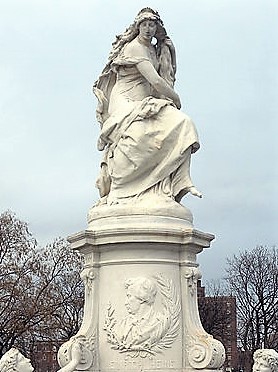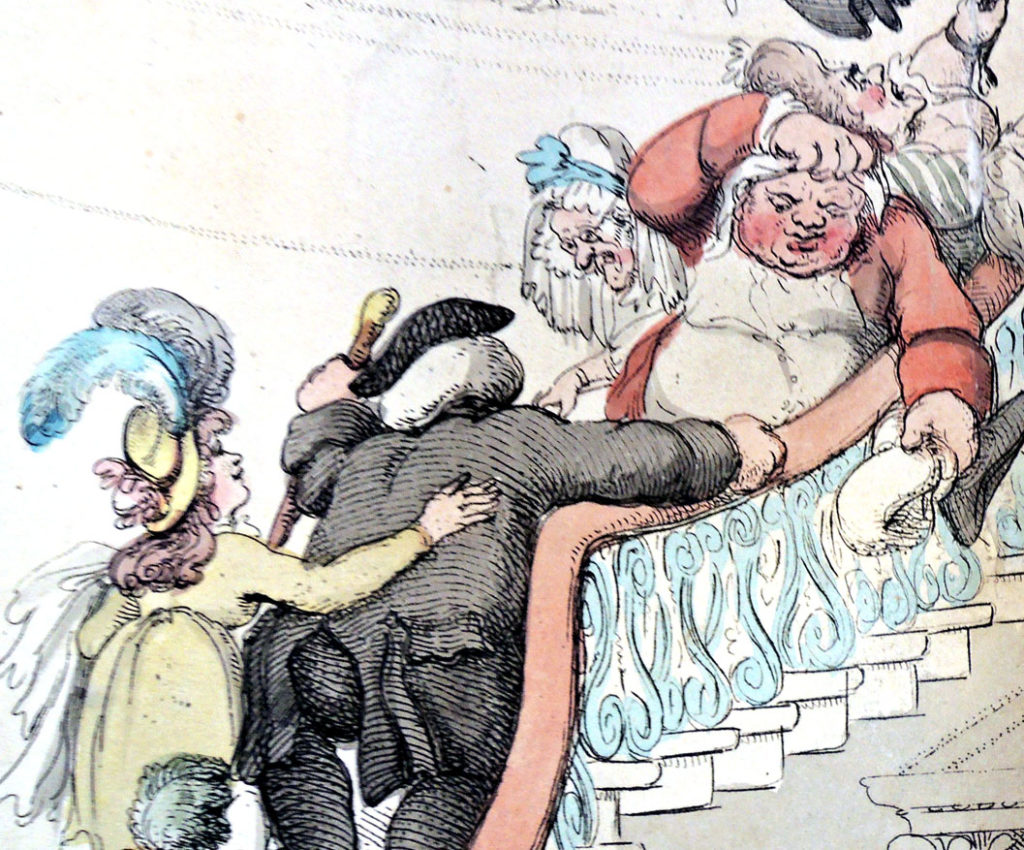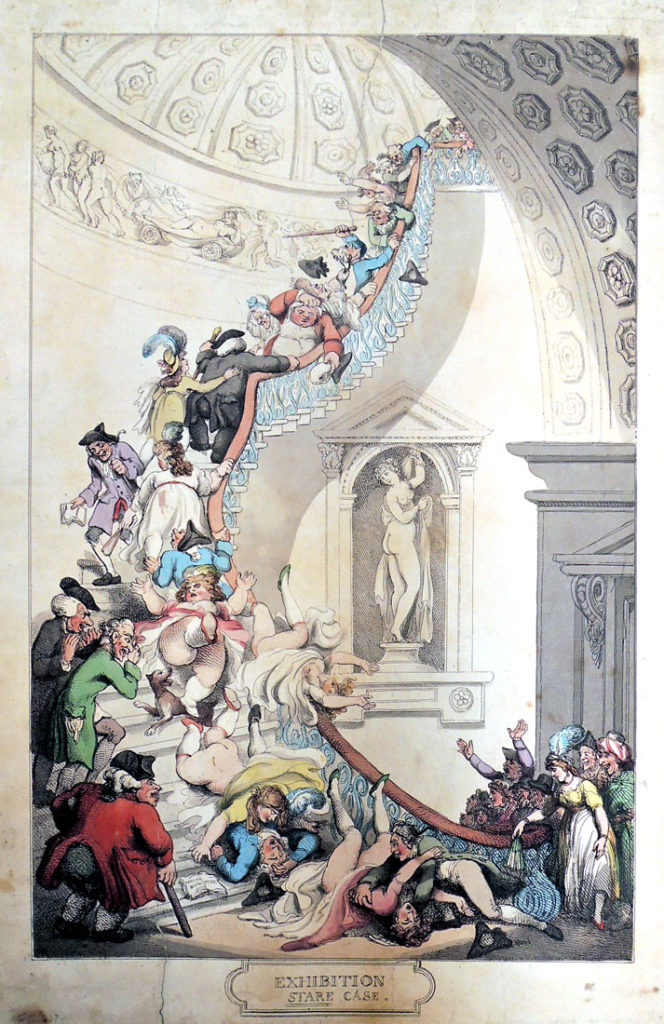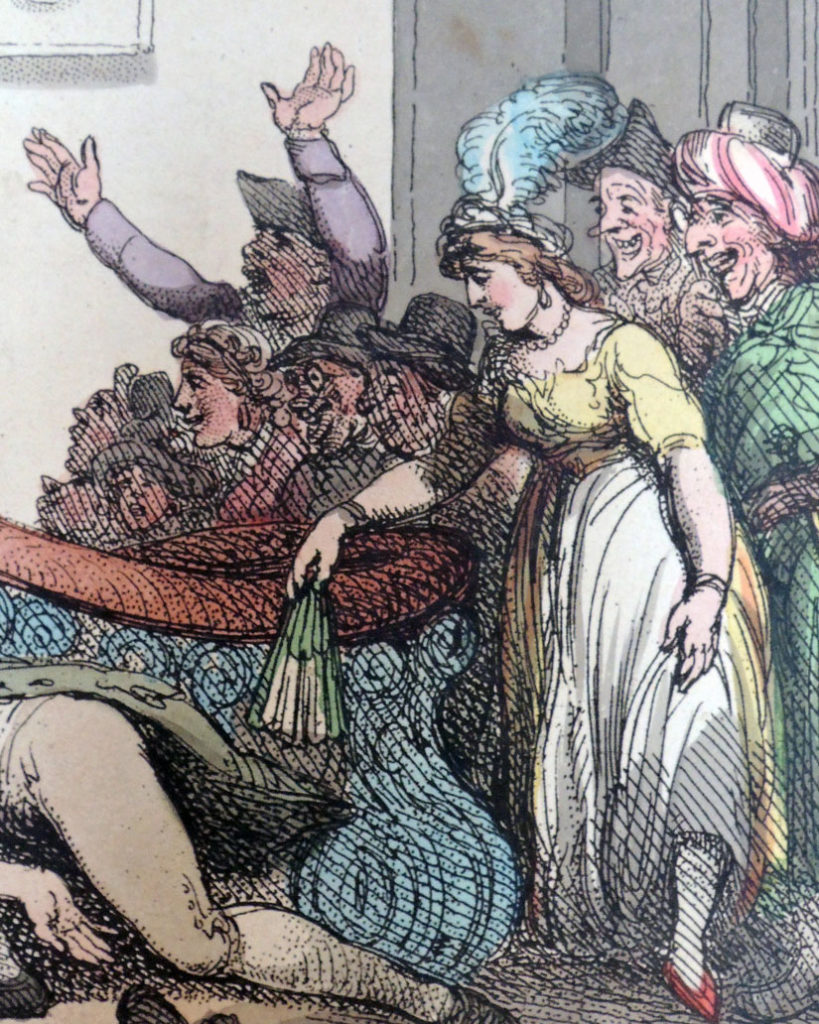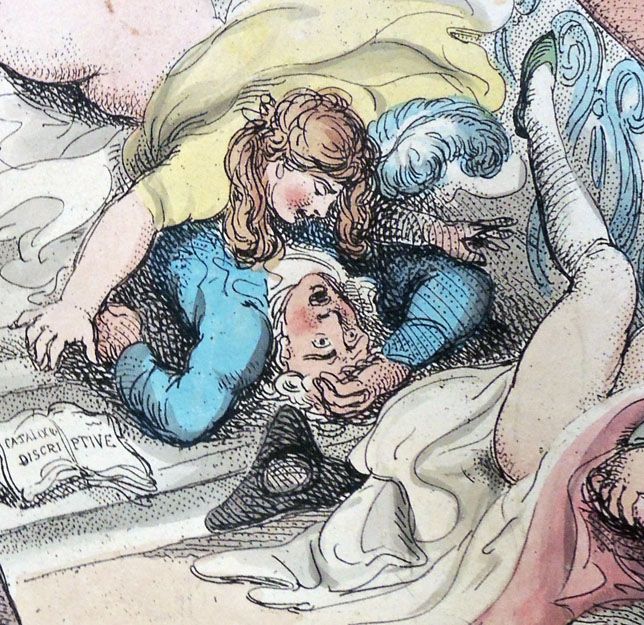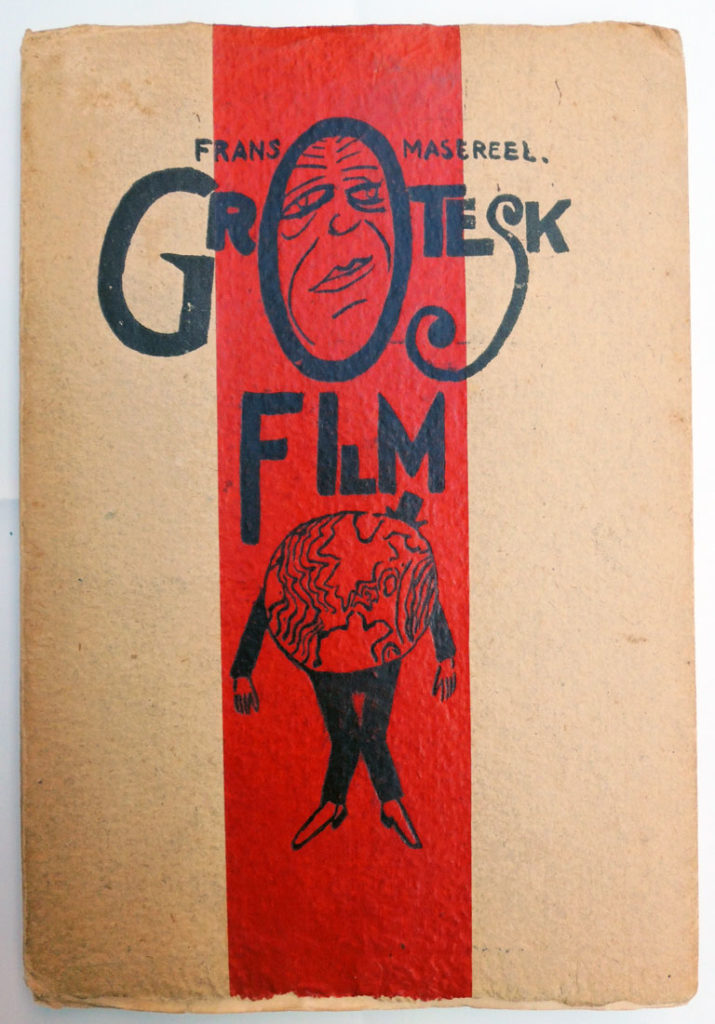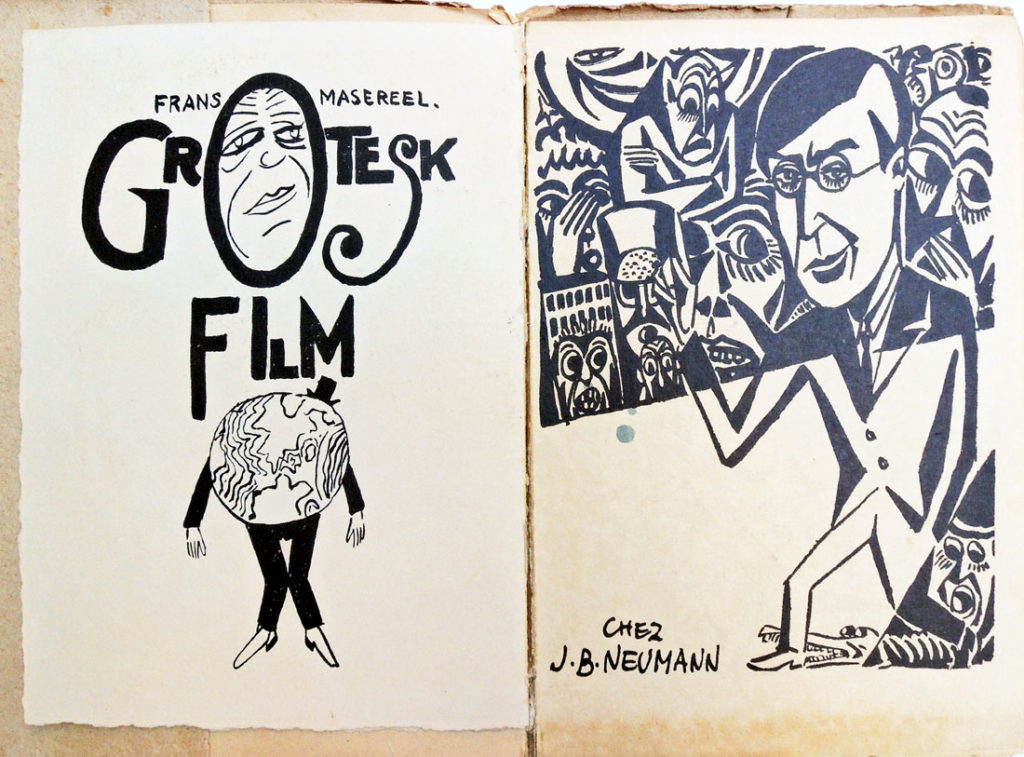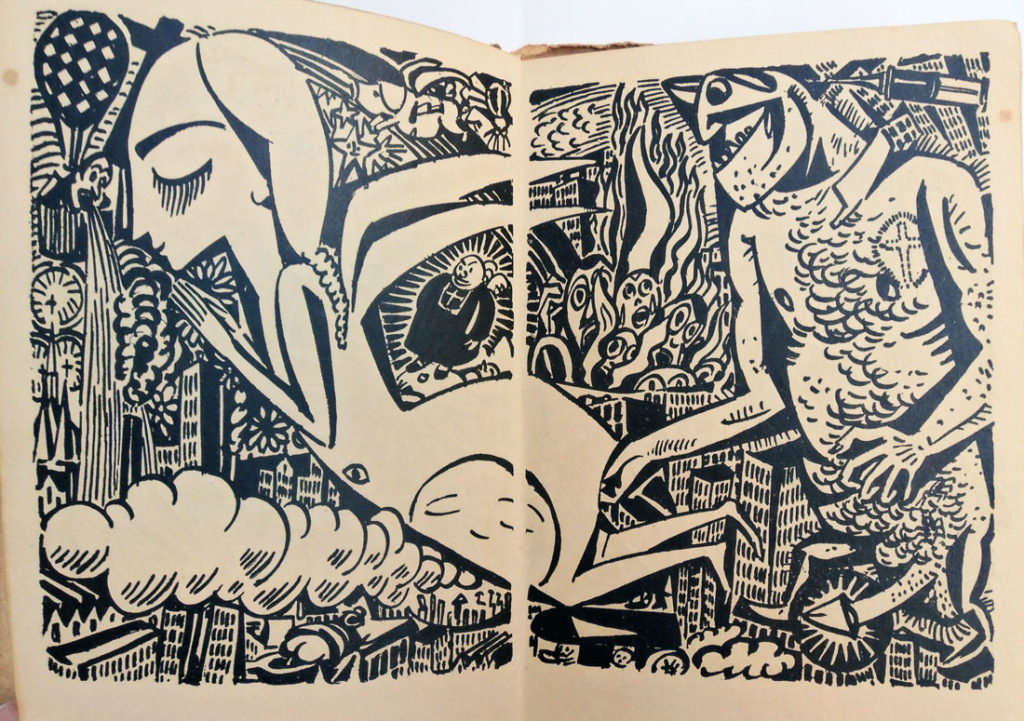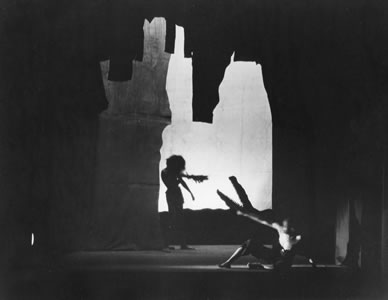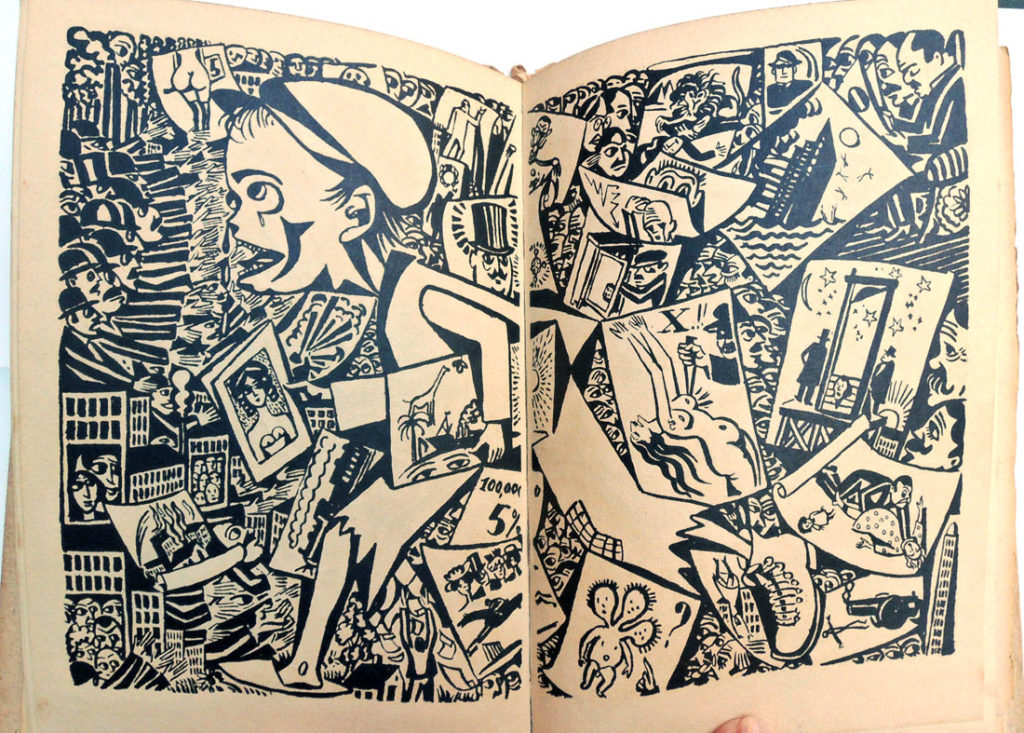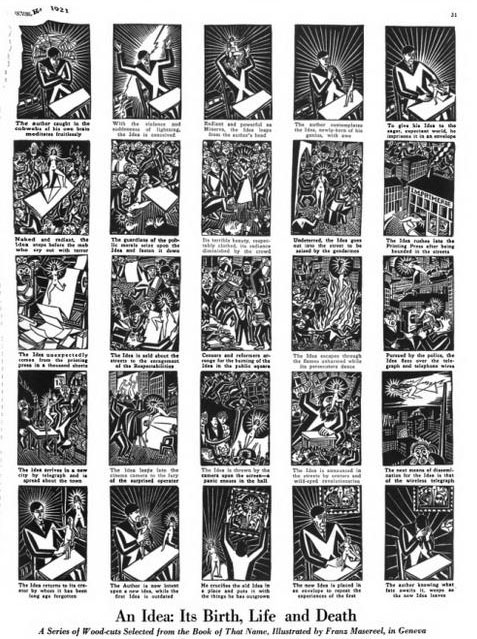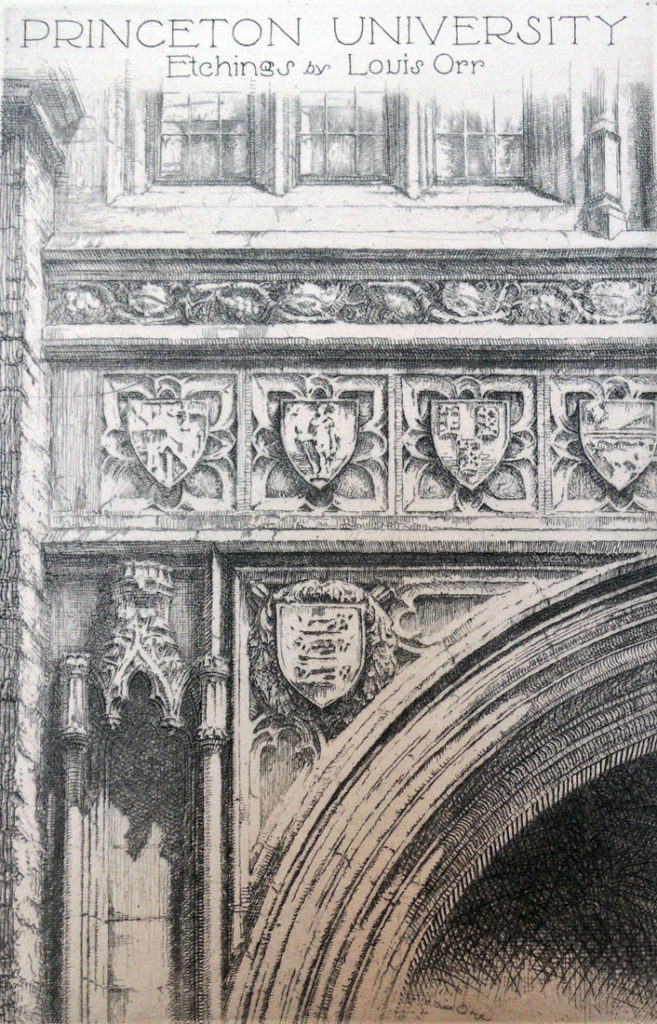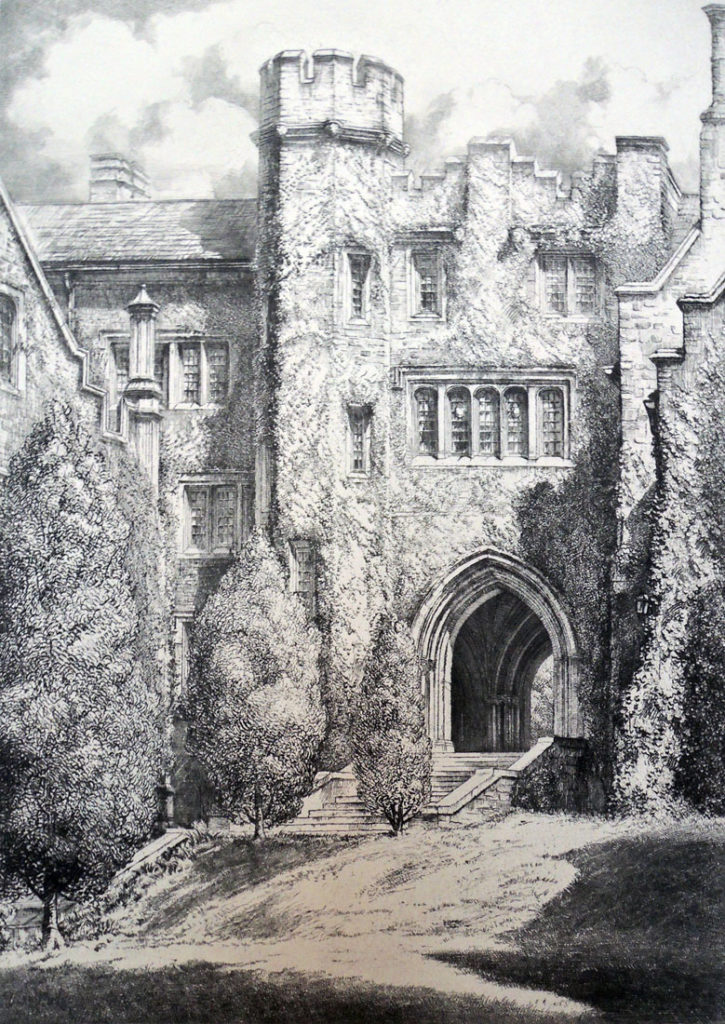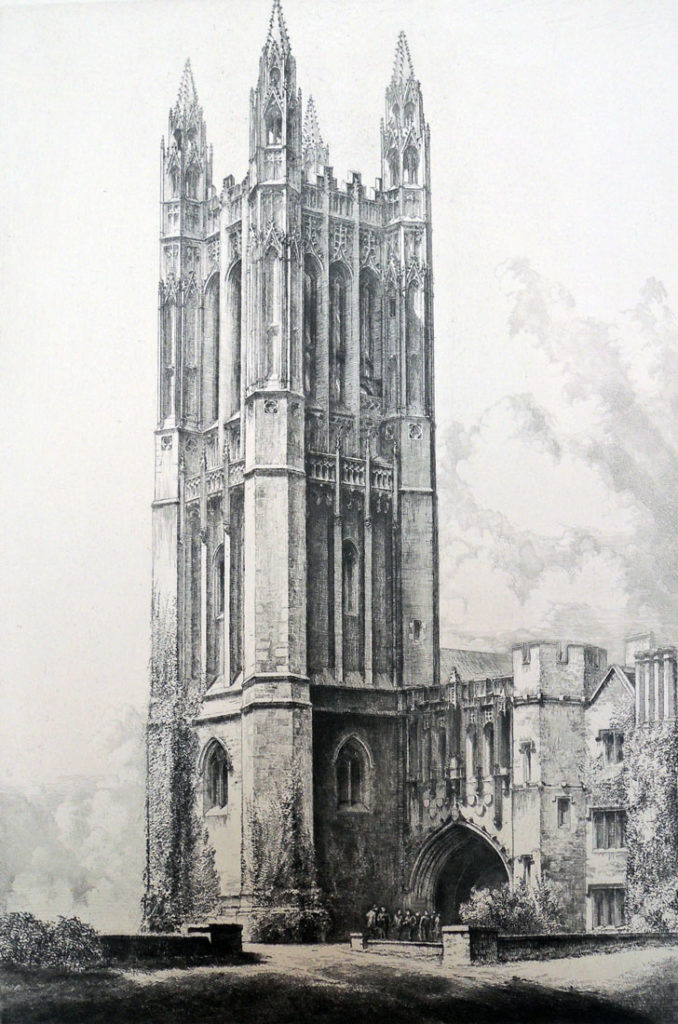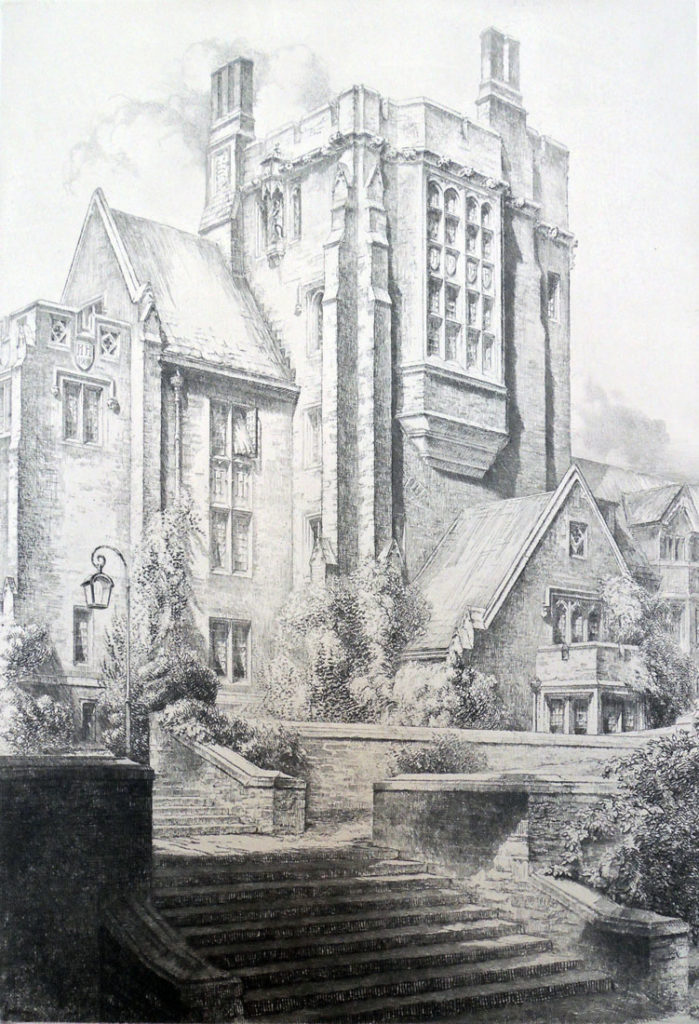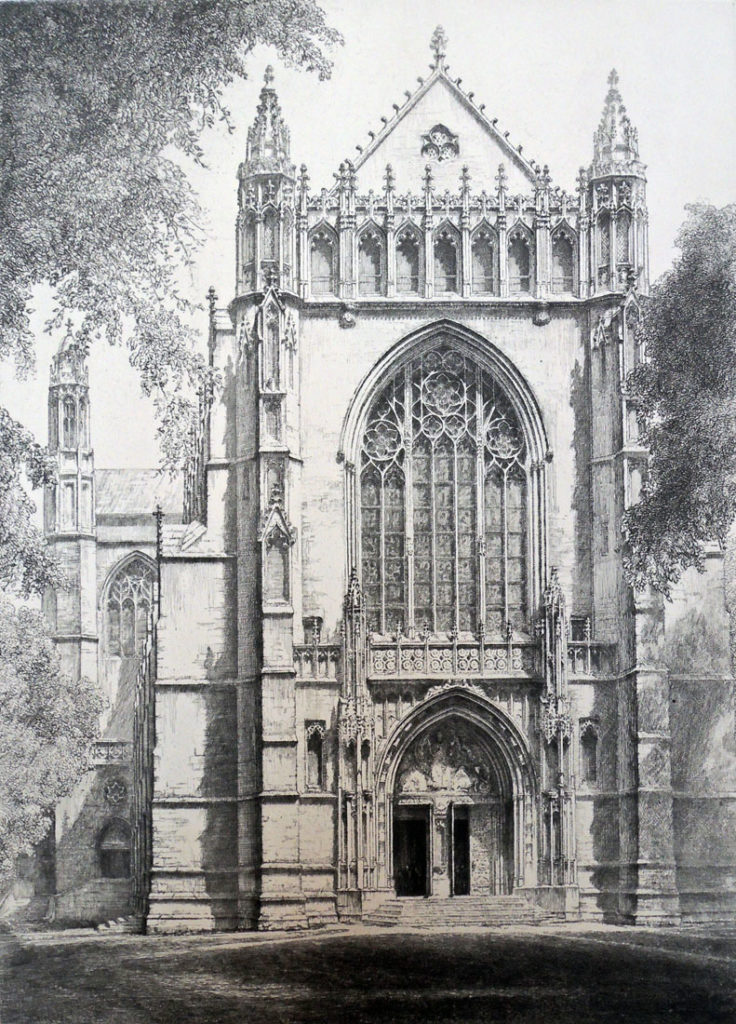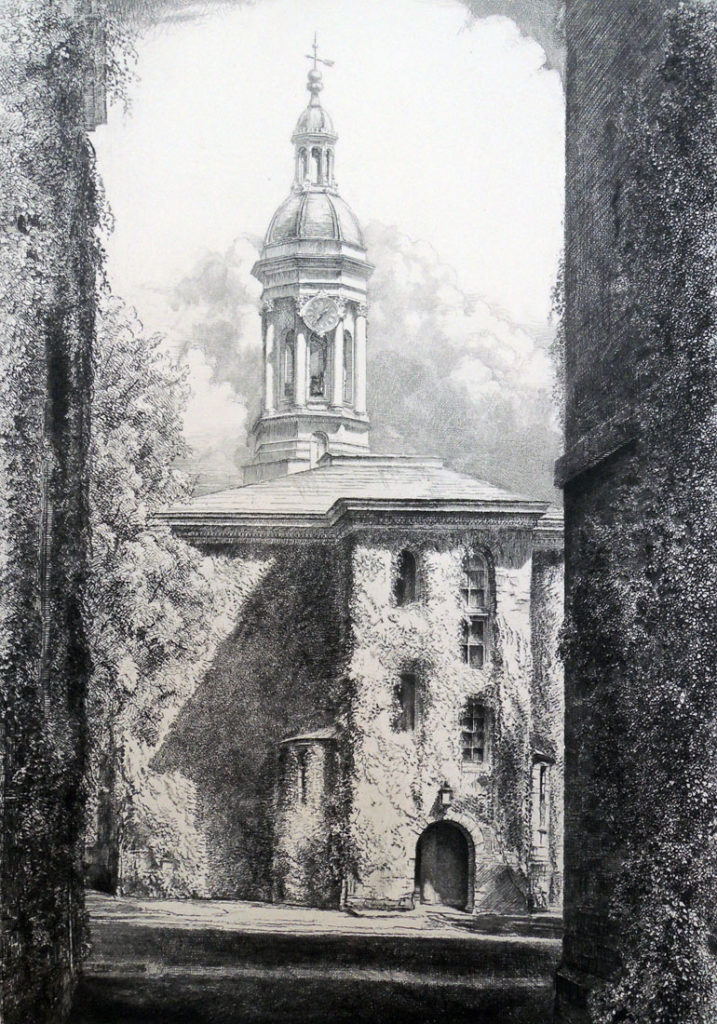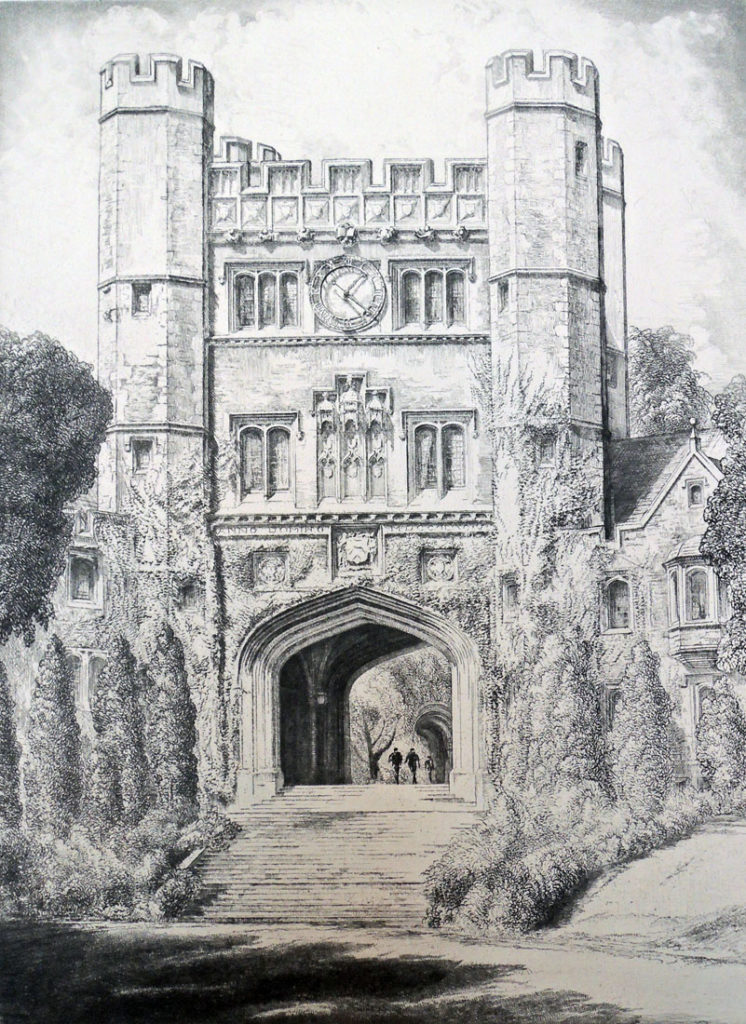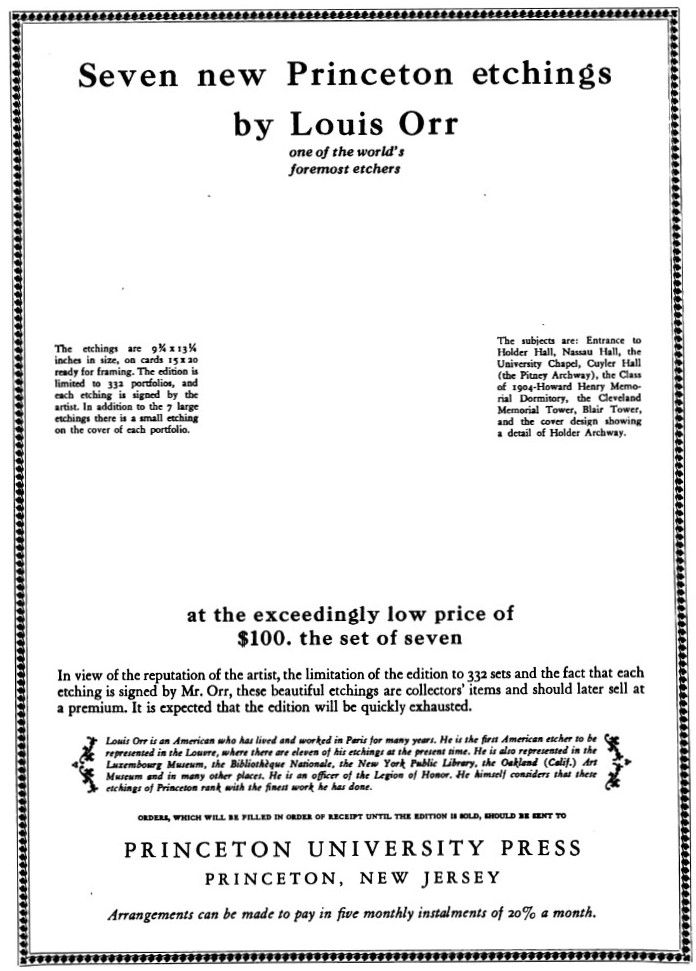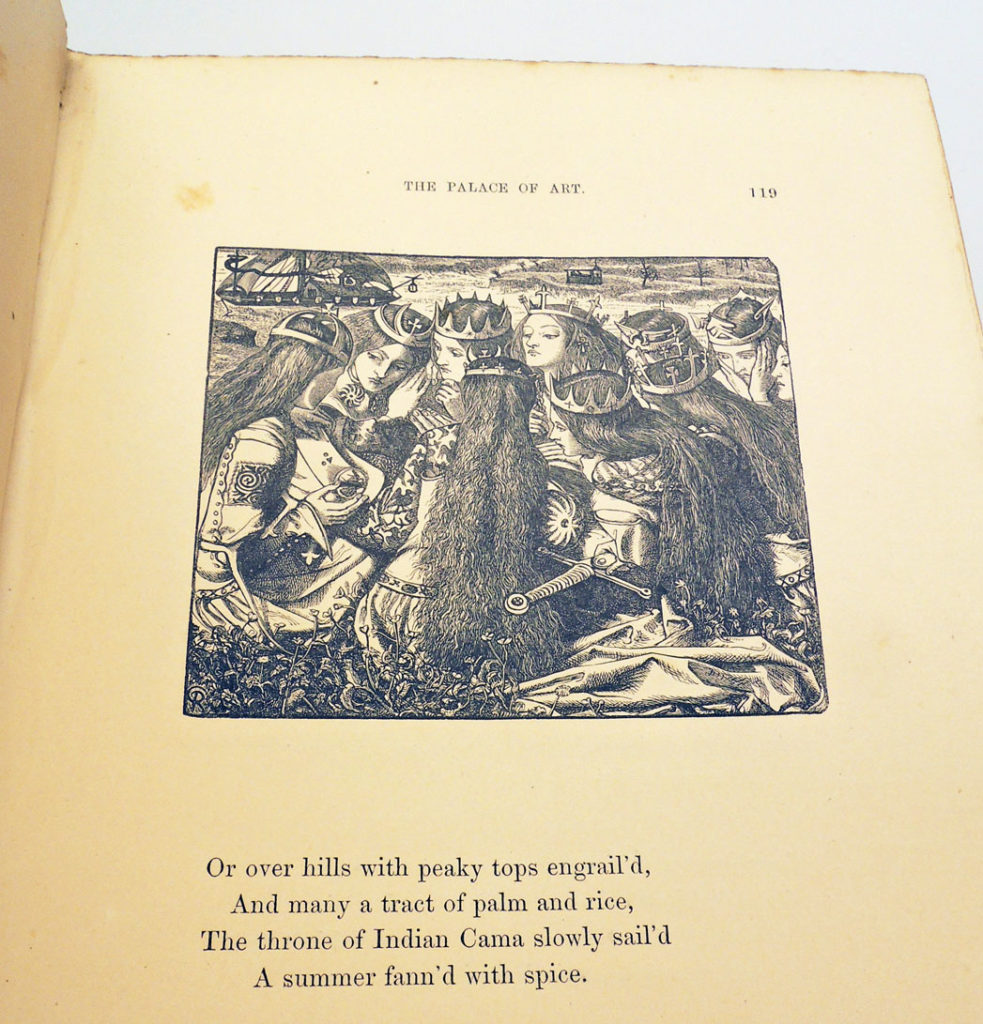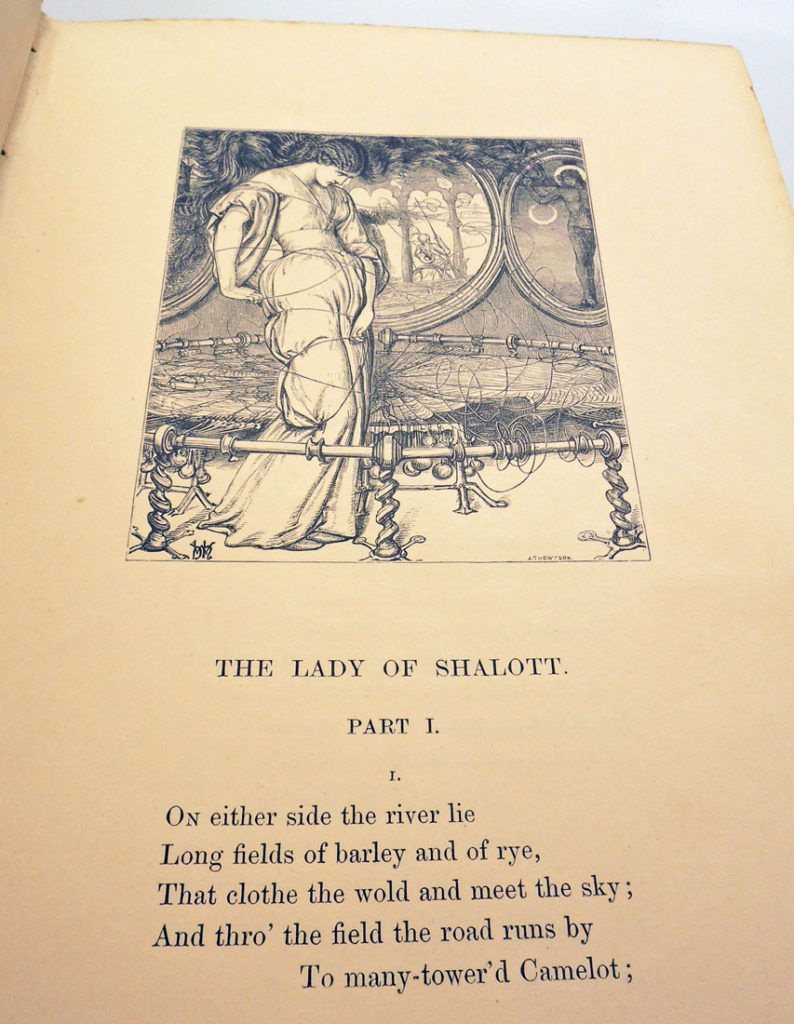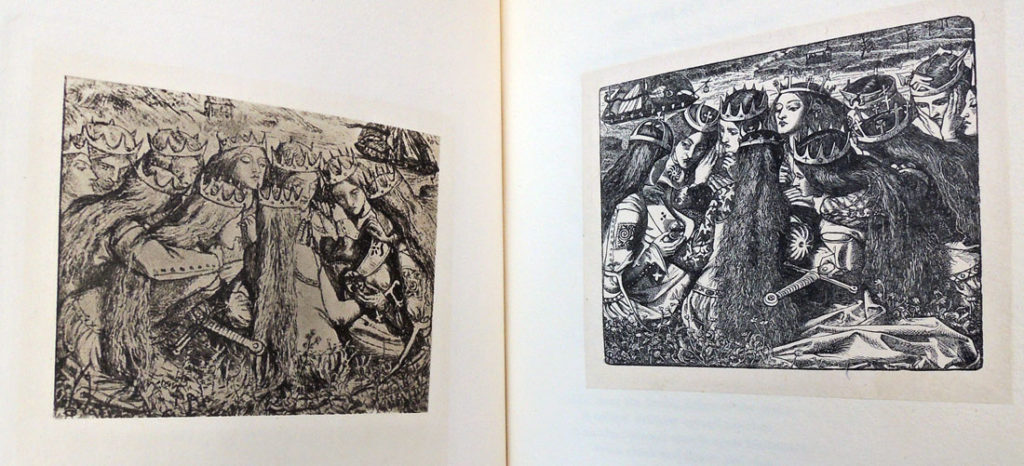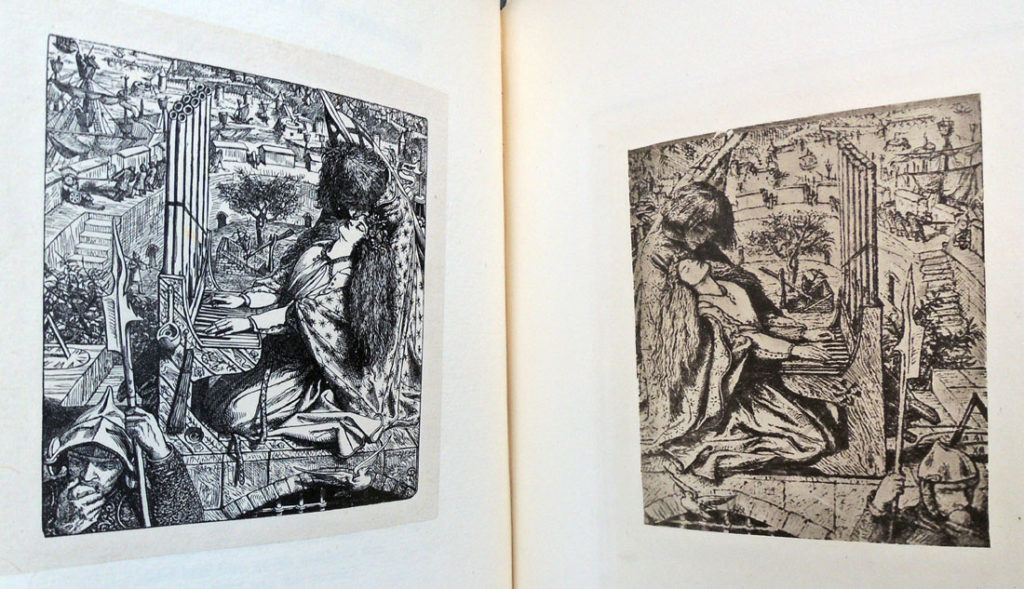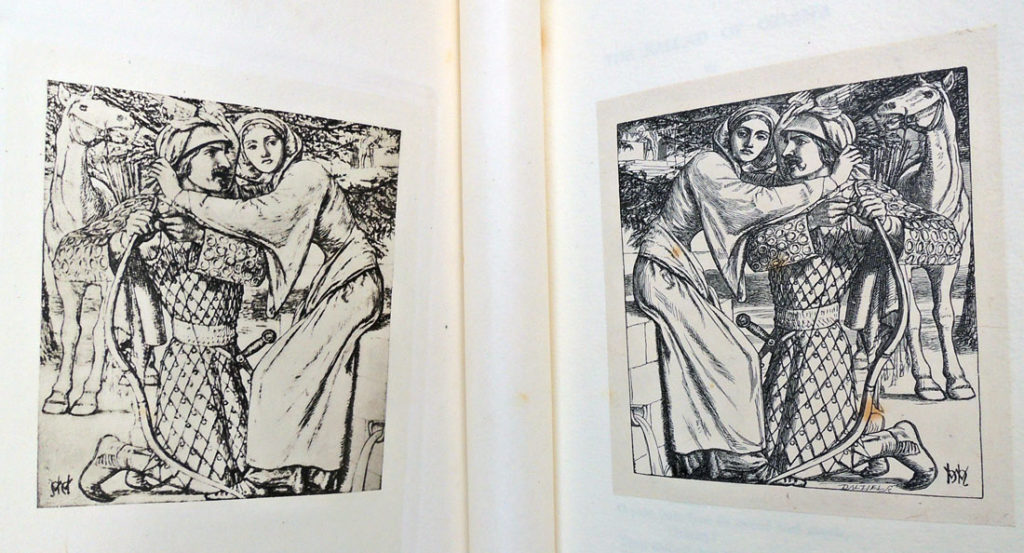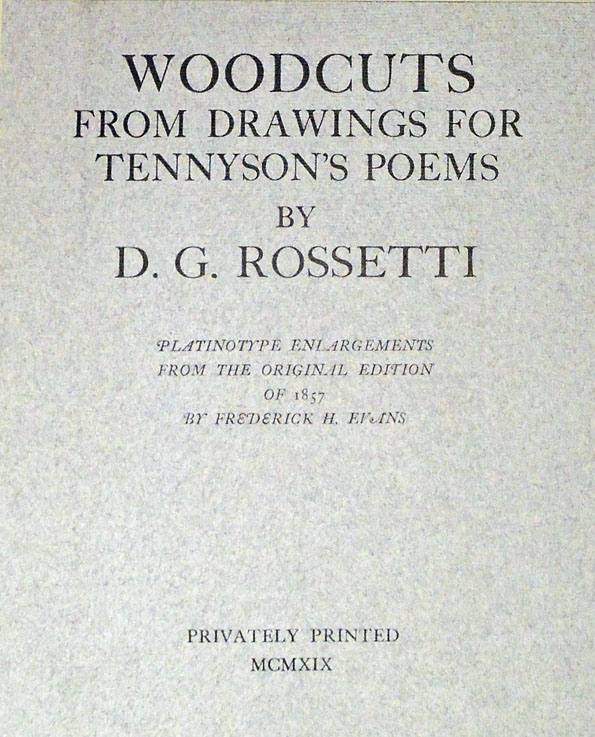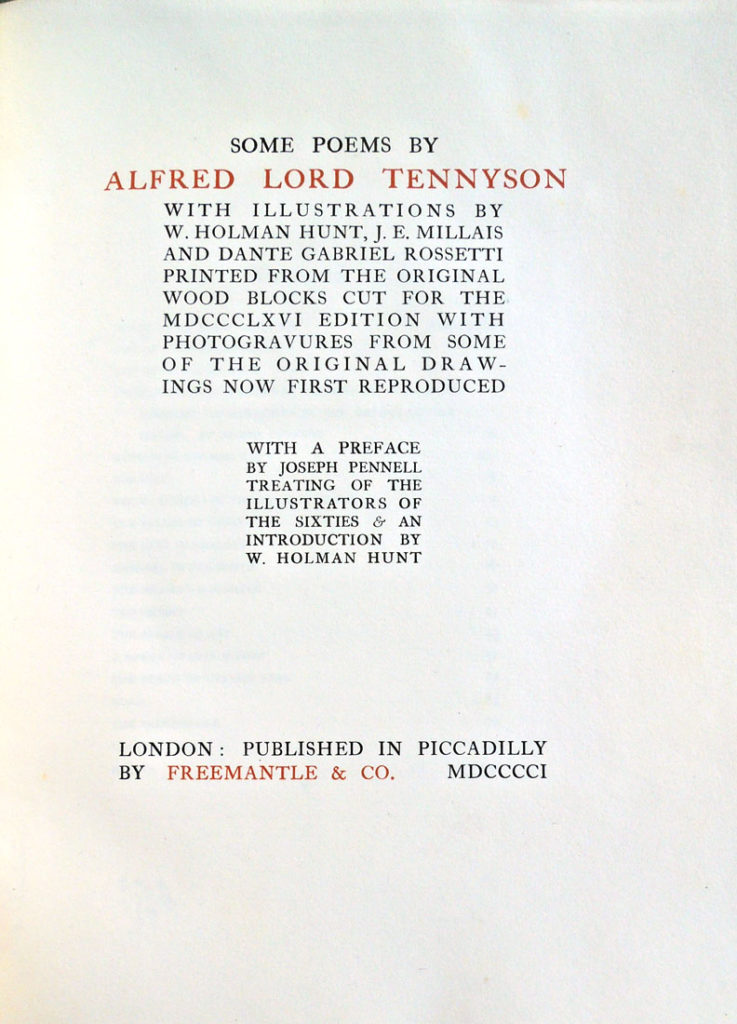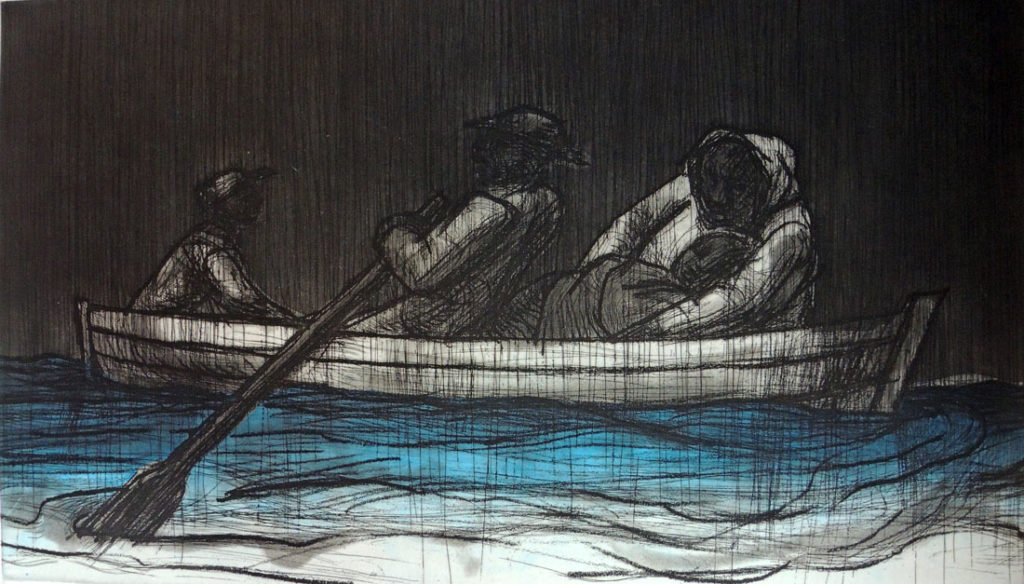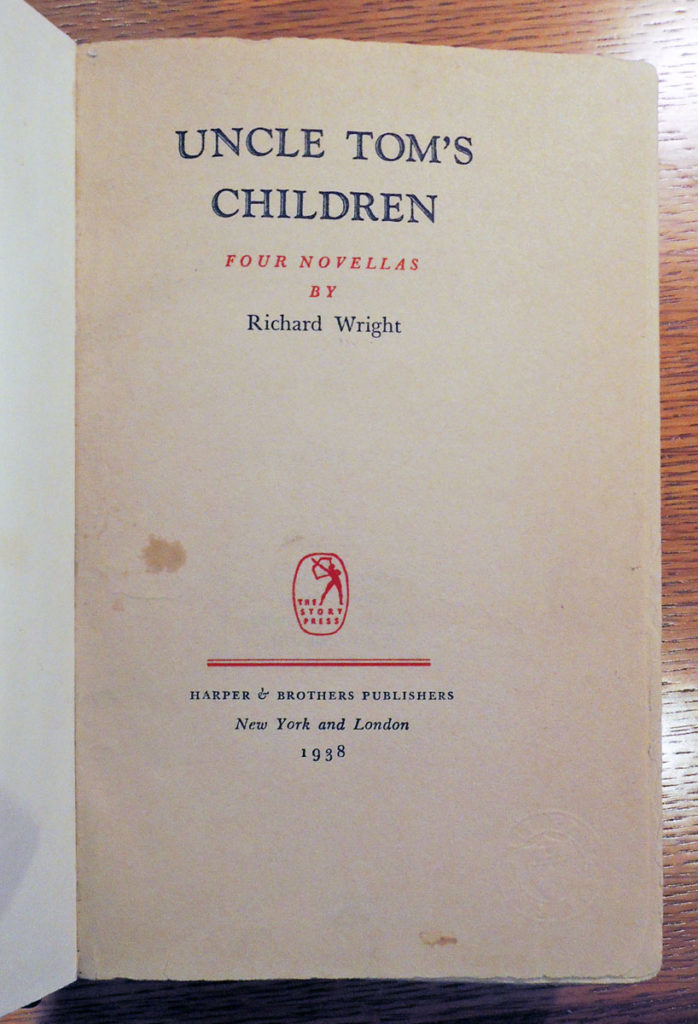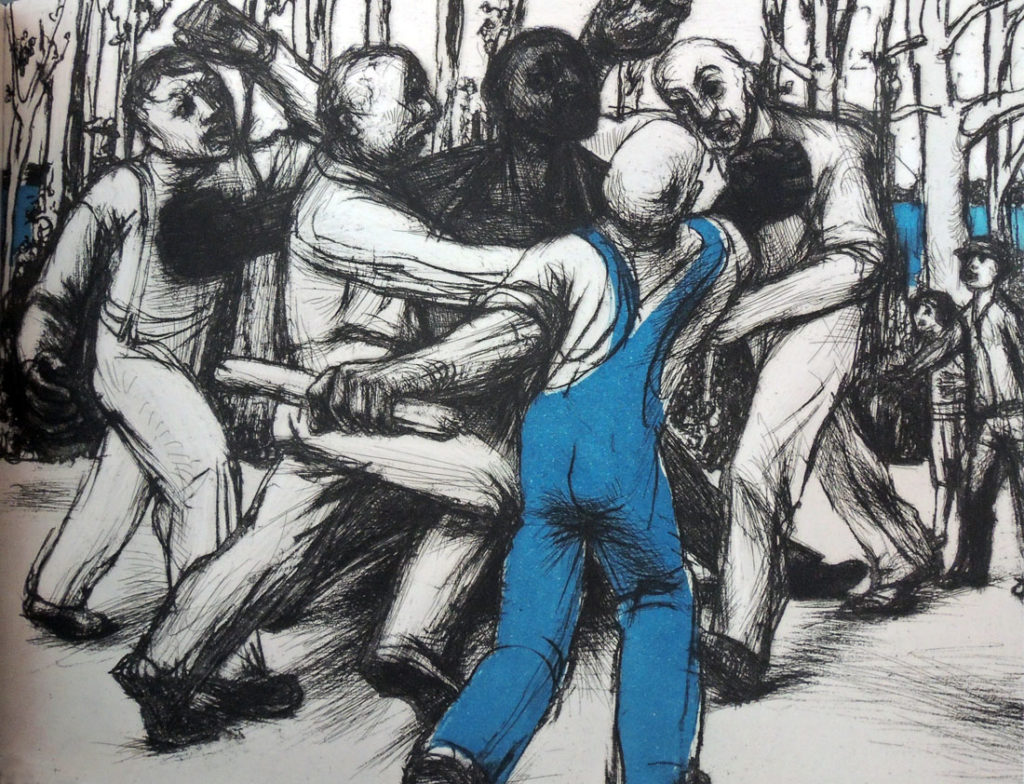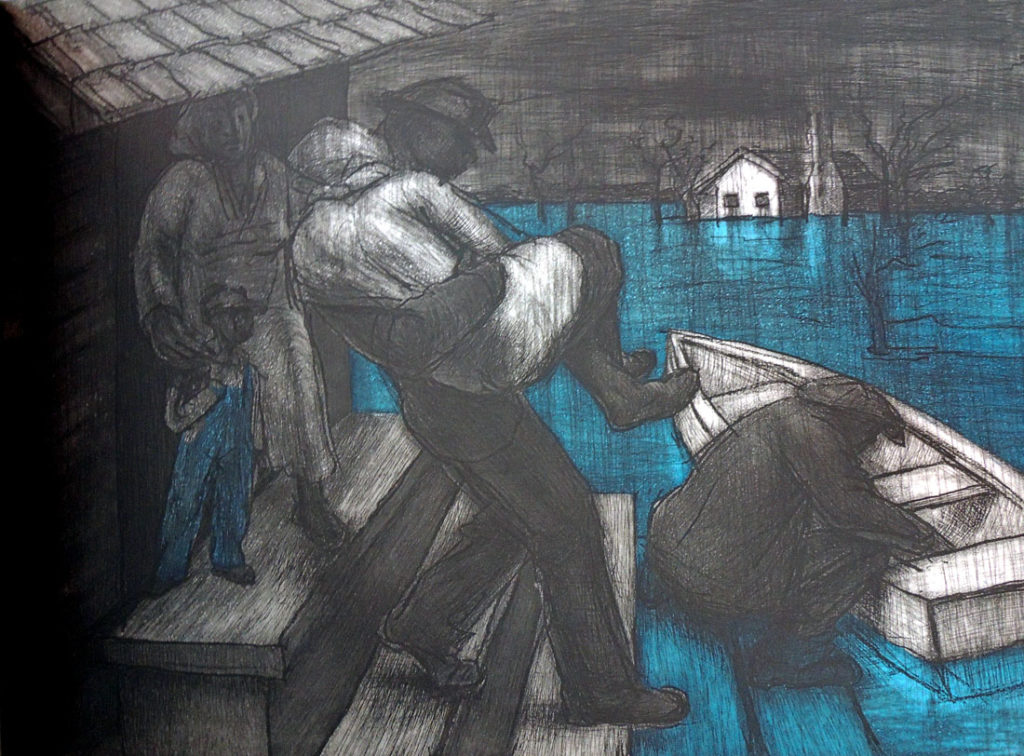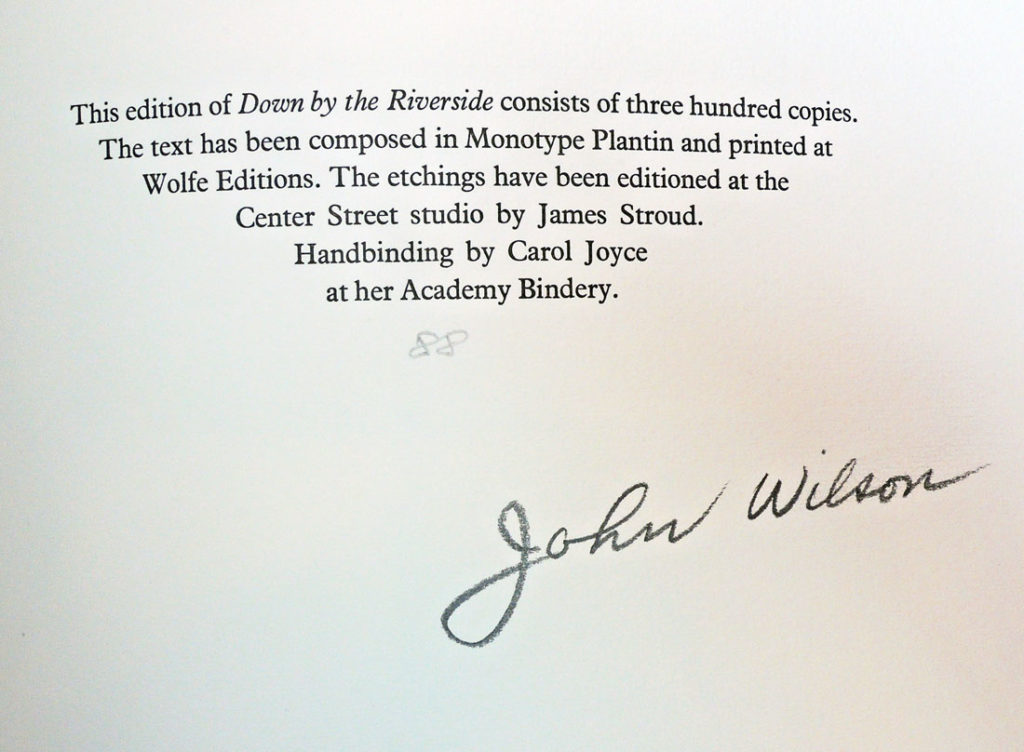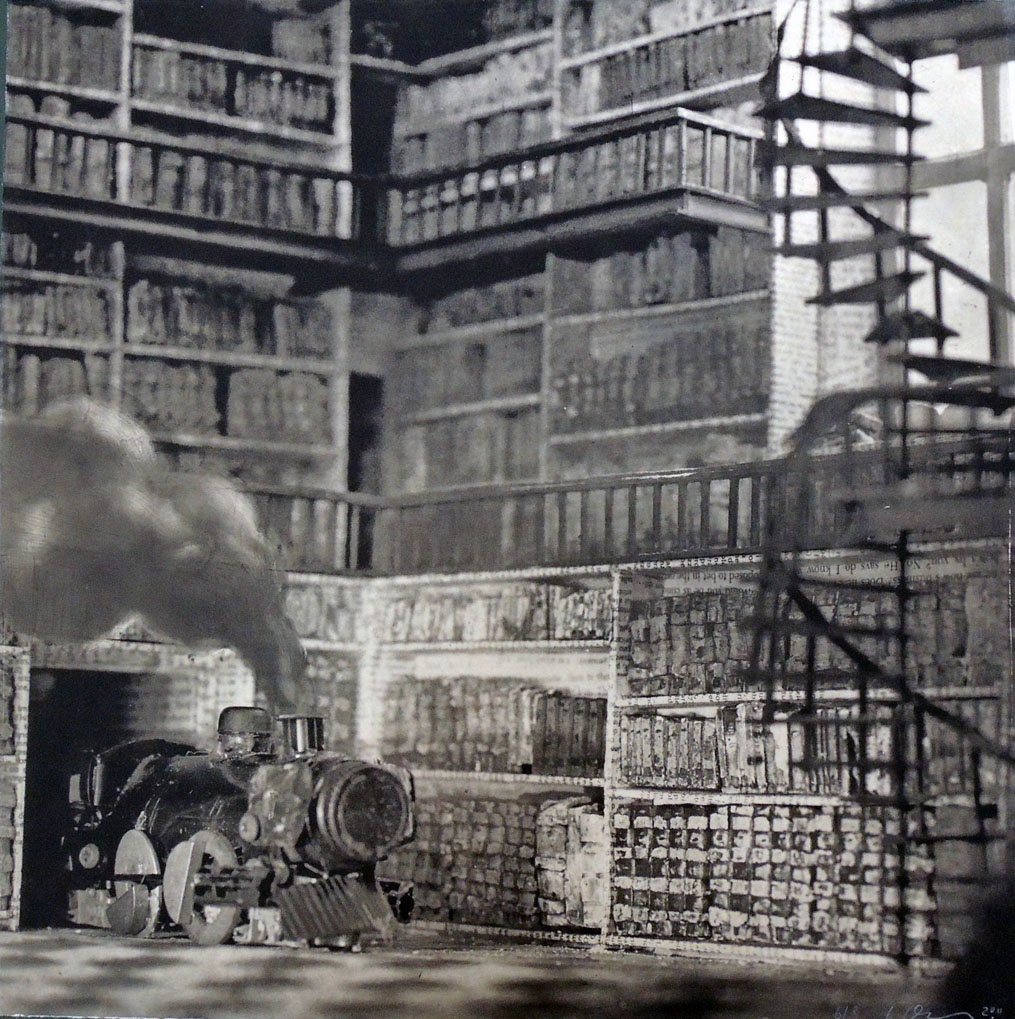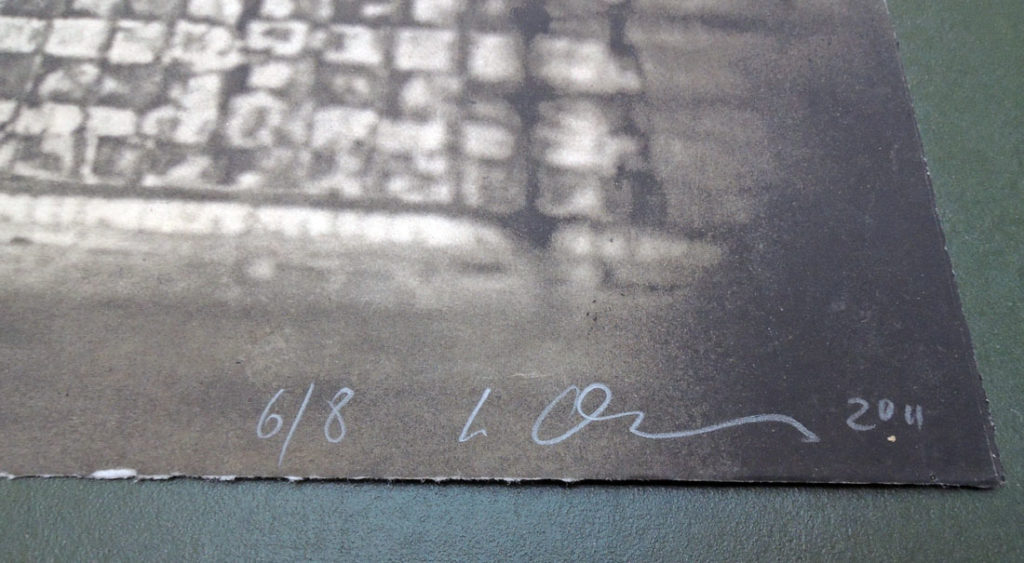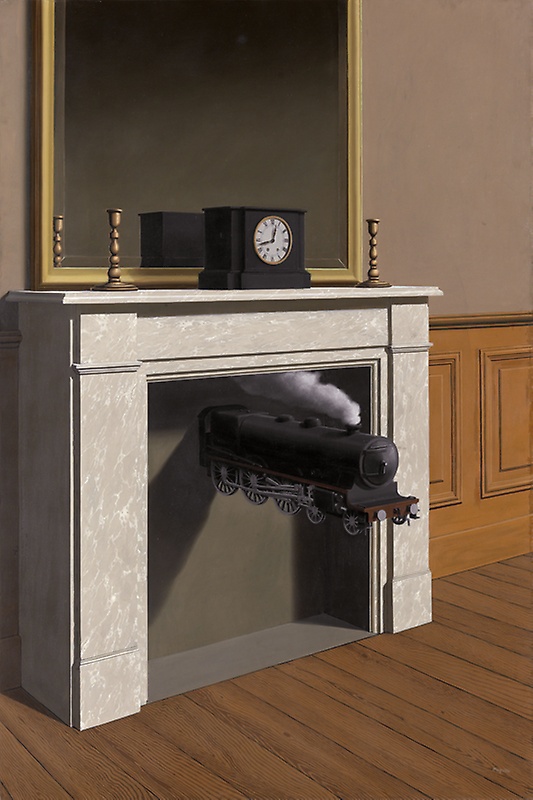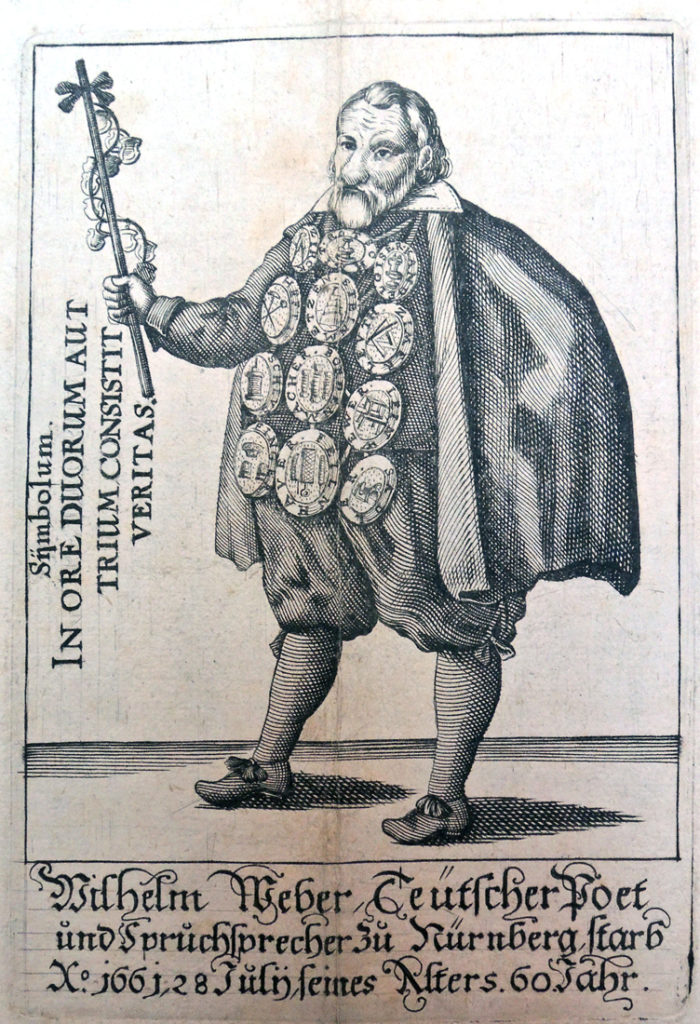
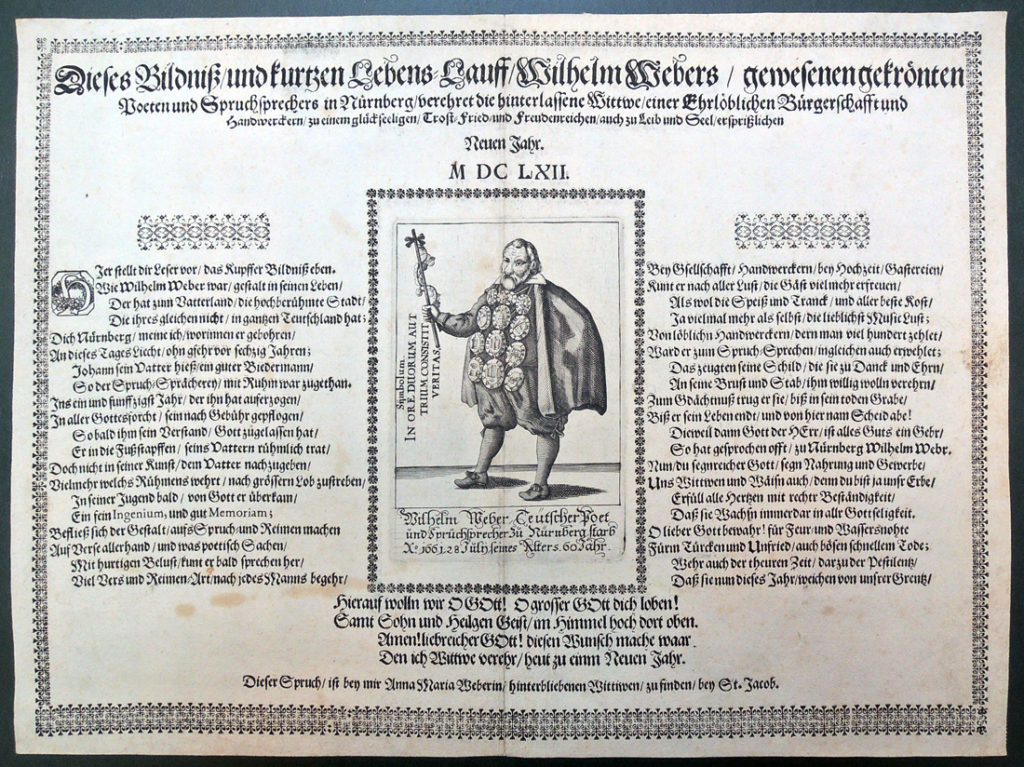 Dieses Bildniß, und kurtzen Lebens-Lauff, Wilhelm Webers. Dieses Bildniss und kurtzen Lebens Lauff, Wilhelm Webers, gewesenen gekrönten Poeten und Spruchspechers in Nürnberg, verehret die hinterlassende Witwe … Nuremberg, bey mir Anna Maria Weberin, hinterbliebenen Wittiwen, zu finden, bey St. Jacob, [1661]. Graphic Arts Collection 2018- in process
Dieses Bildniß, und kurtzen Lebens-Lauff, Wilhelm Webers. Dieses Bildniss und kurtzen Lebens Lauff, Wilhelm Webers, gewesenen gekrönten Poeten und Spruchspechers in Nürnberg, verehret die hinterlassende Witwe … Nuremberg, bey mir Anna Maria Weberin, hinterbliebenen Wittiwen, zu finden, bey St. Jacob, [1661]. Graphic Arts Collection 2018- in process
Although Dante never received a laurel wreath during his lifetime, Wilhelm Weber (1602-1661) was honored as Poet Laureate in 1647 at the age of forty-five. Thanks to a recent acquisition, the Graphic Arts Collection now holds two variant broadsides celebrating Weber, both published in 1661, the year of the poet’s death in Nuremberg. The central focus of both are similar engraved portraits of Weber wearing his twelve honorary medals.
Eigentliche Bildnuß, Deß Ersamen Wilhelm Webers... was published by Hans Weber, presumed to be the poet’s son, with a publication line: “Dieses Exemplar ist zufinden bey mir Hannß Weber, bey S. Jacob auffm Hohenpflaster.” The second: Dieses Bildniß, und kurtzen Lebens-Lauff, Wilhelm Webers... was published by his widow Anna Maria Weber, has the publication line: “Dieser Spruch, ist bey mir Anna Maria Weberin hinterbliebenen Wittiwen, zu finden, bey St. Jacob.”
According to Werner Wilhelm Schnabel, “A form of poetry situated outside the world of the cultural elite flourished in the 17th century. One of the best-documented representatives of this genre was the “Spruchsprecher” Wilhelm Weber . . . [who] worked as a journalist and publisher, and also as a contract poet and popular elocutionist.” A spruchsprecher was a spokesperson who recited rhymes, told stories, and spoke at public events, weddings, and New Year’s Day celebrations. More details on Weber and his broadsides can be found in Poets Laureate in the Holy Roman Empire by John Flood (2011).
One of Weber’s own New Year’s broadsides and other publications about the poet can be found in the digital collection of the State Library in Berlin. Too bad there is no broadside to celebrate the 22nd U.S. Poet Laureate Consultant in Poetry of the United States, Tracy K. Smith, Roger S. Berlind ’52 Professor of the Humanities, Director and Professor of Creative Writing at Princeton University.
 Eigentliche Bildnuss : Dess Ersamen Wilhelm Webers, gekrönten Teutschen Poeten, und Spruchsprechers in Nürnberg, seines Alters 60. Jahr ([Nuremberg] : Dieses Exemplair ist zufinden bey mir Hannss Weber, bey S. Jacob auffm Hohenpflaster, [1661]). Text ends: So hat gesprochen/ Wilhelm Weber. Graphic Arts Collection Q-000551.
Eigentliche Bildnuss : Dess Ersamen Wilhelm Webers, gekrönten Teutschen Poeten, und Spruchsprechers in Nürnberg, seines Alters 60. Jahr ([Nuremberg] : Dieses Exemplair ist zufinden bey mir Hannss Weber, bey S. Jacob auffm Hohenpflaster, [1661]). Text ends: So hat gesprochen/ Wilhelm Weber. Graphic Arts Collection Q-000551.
Comparing them in size below:

